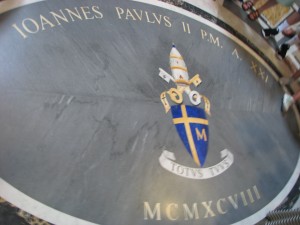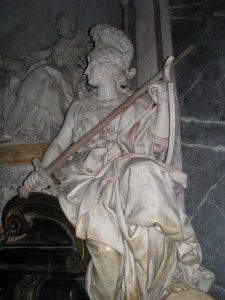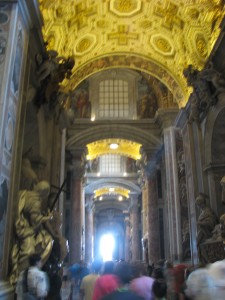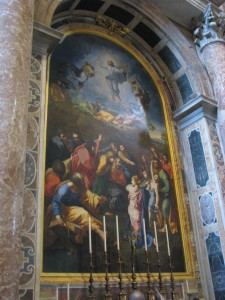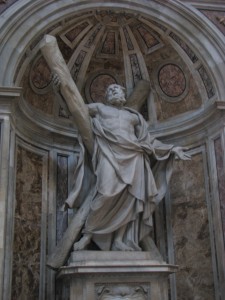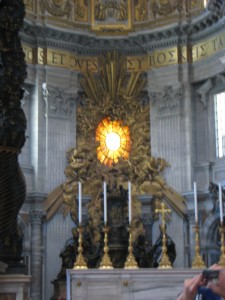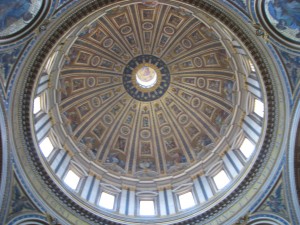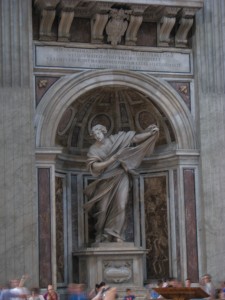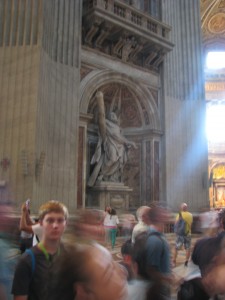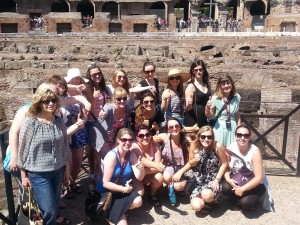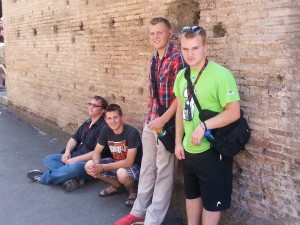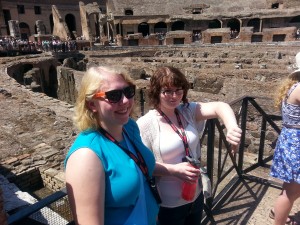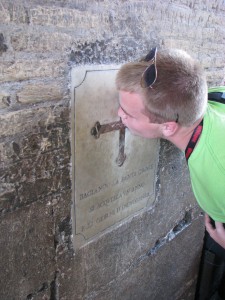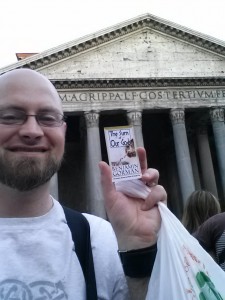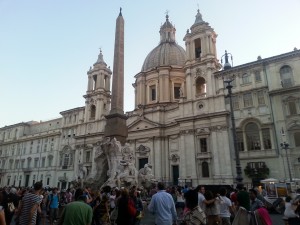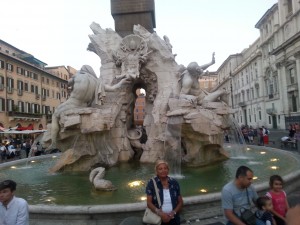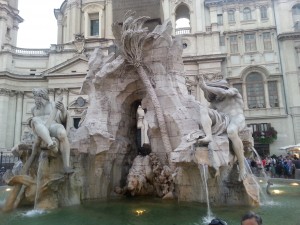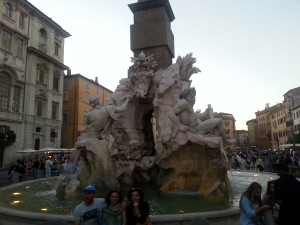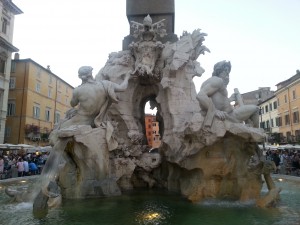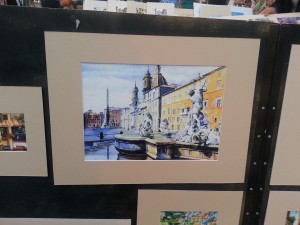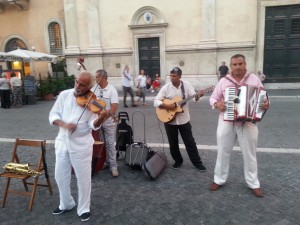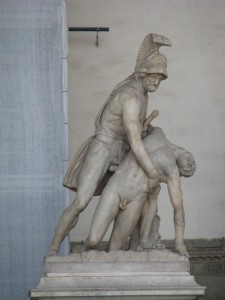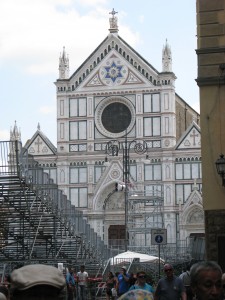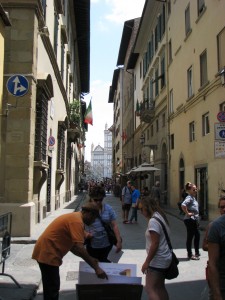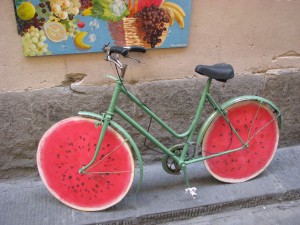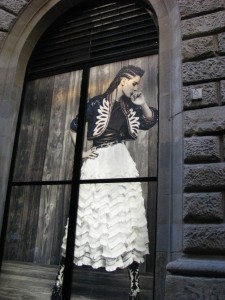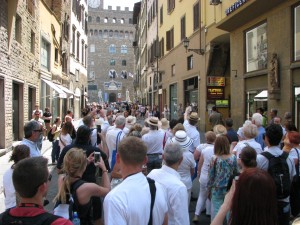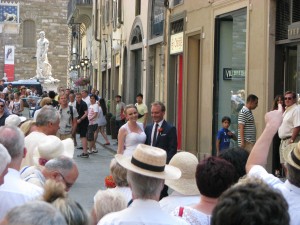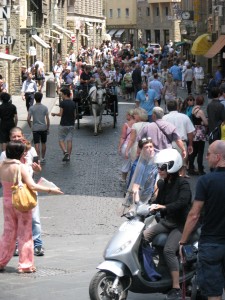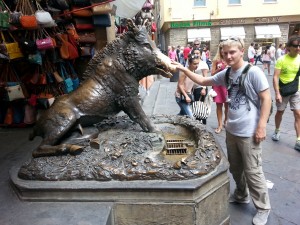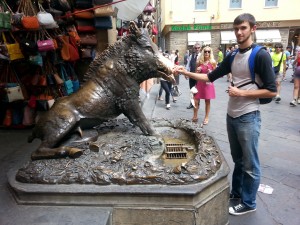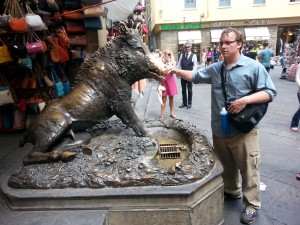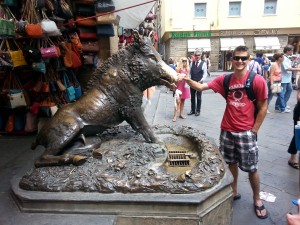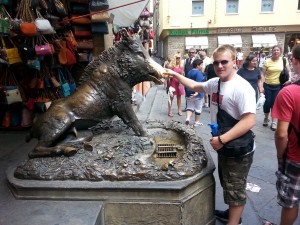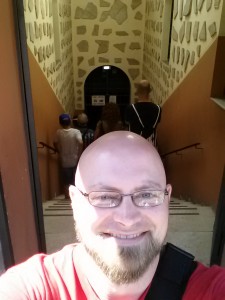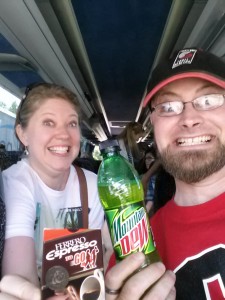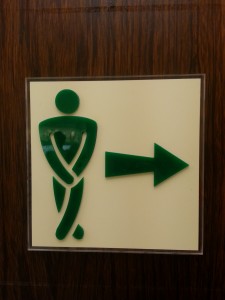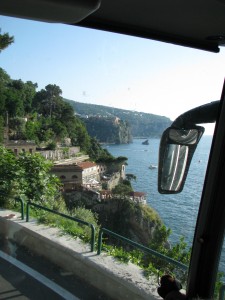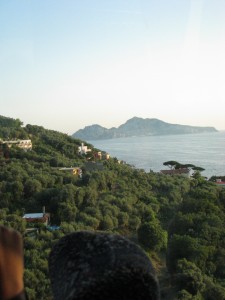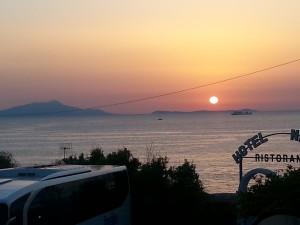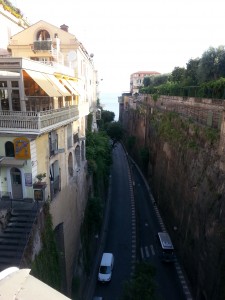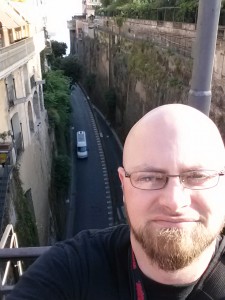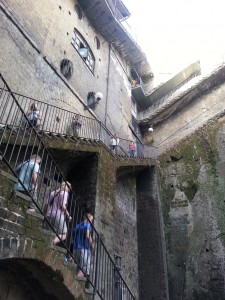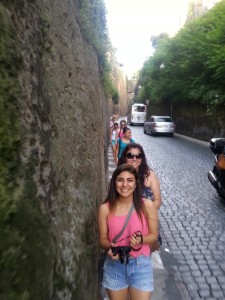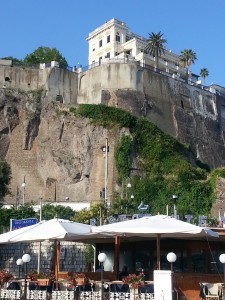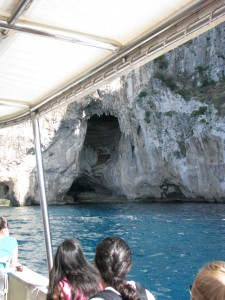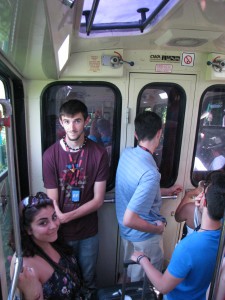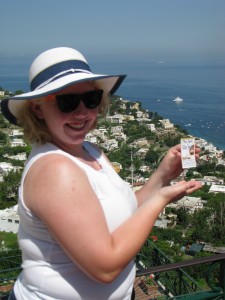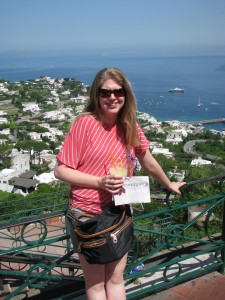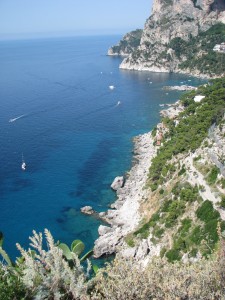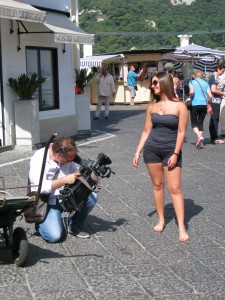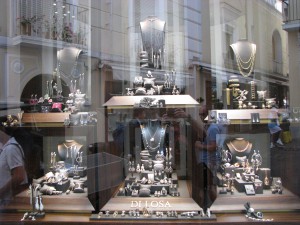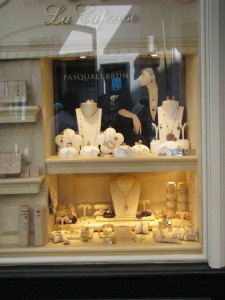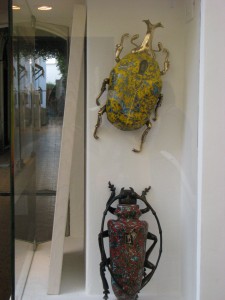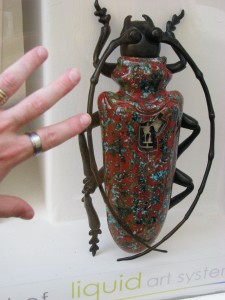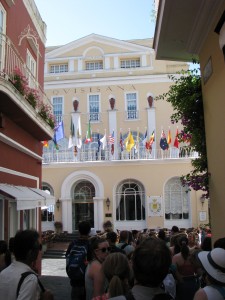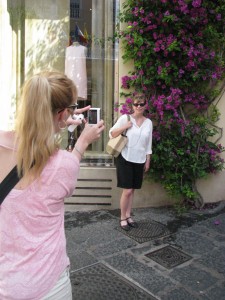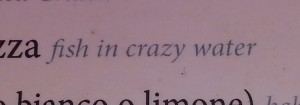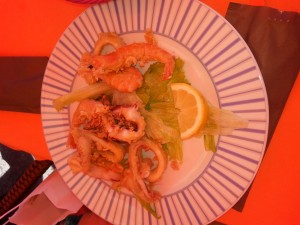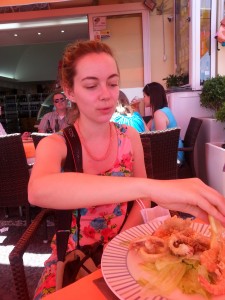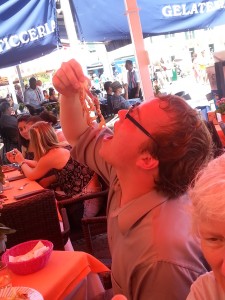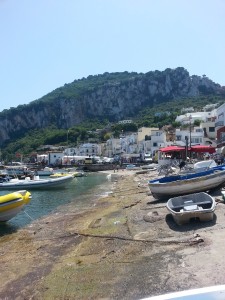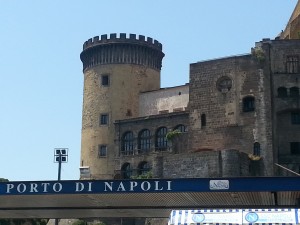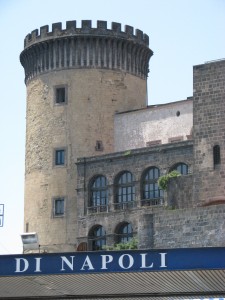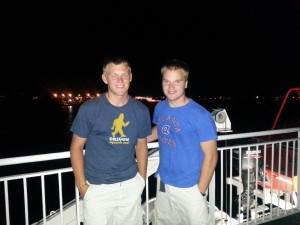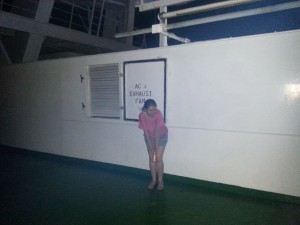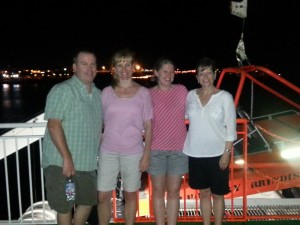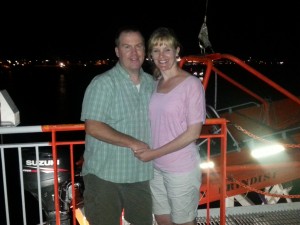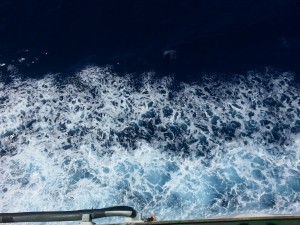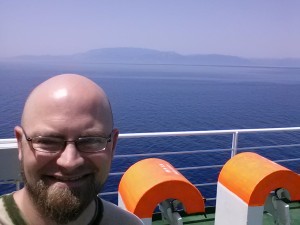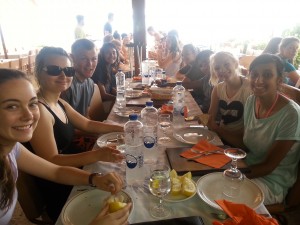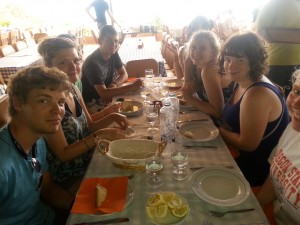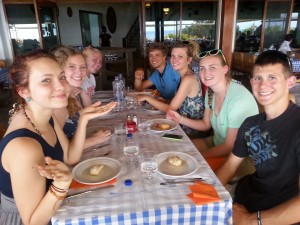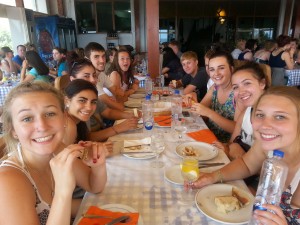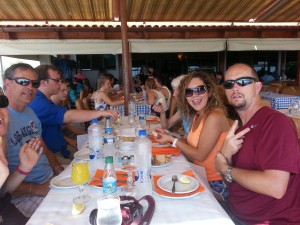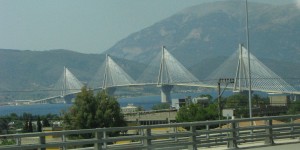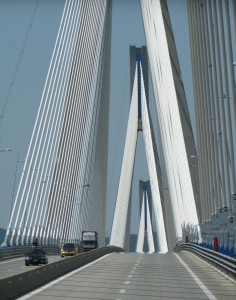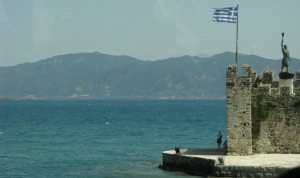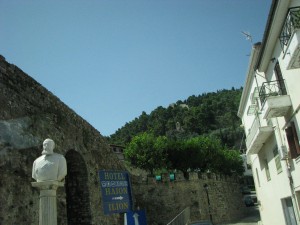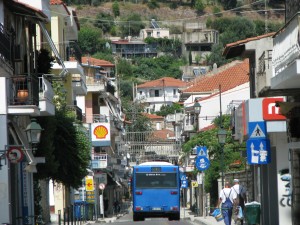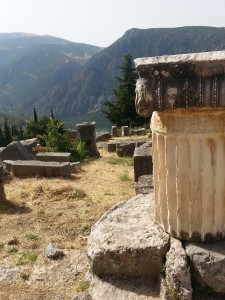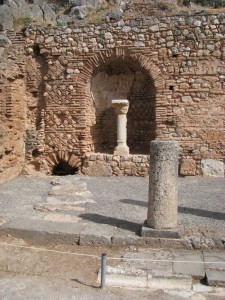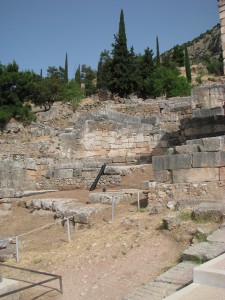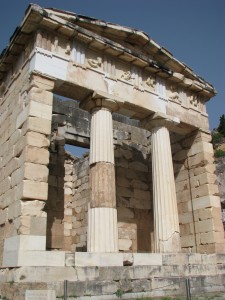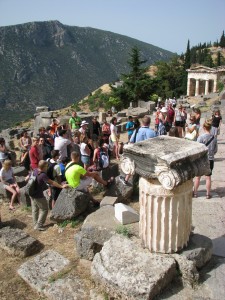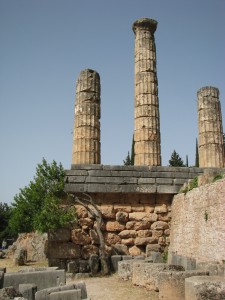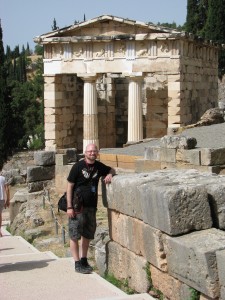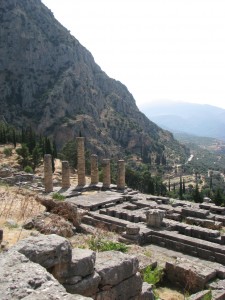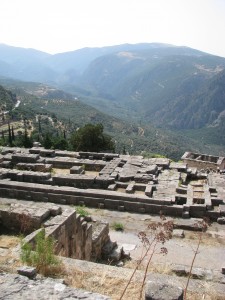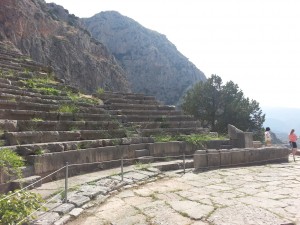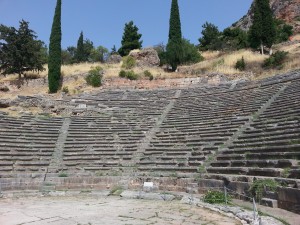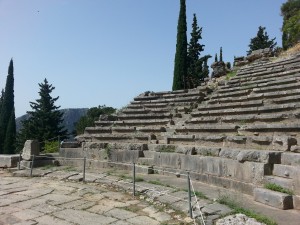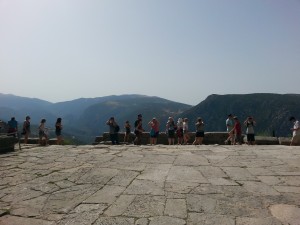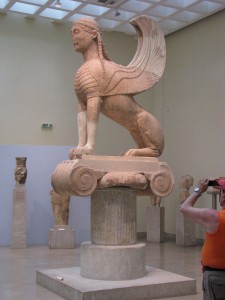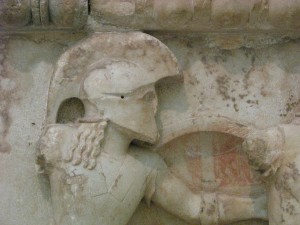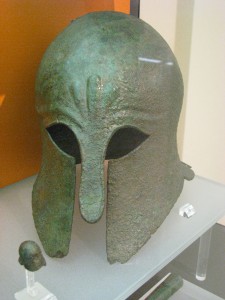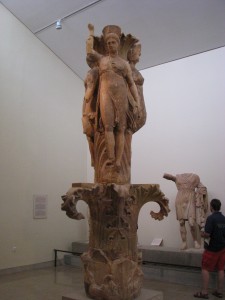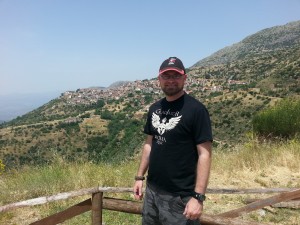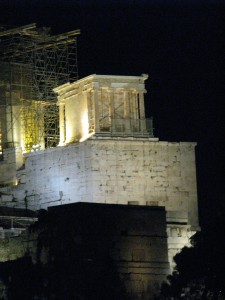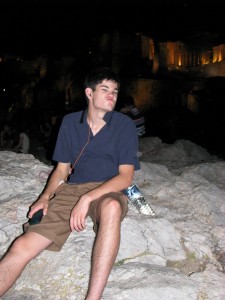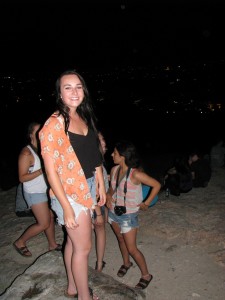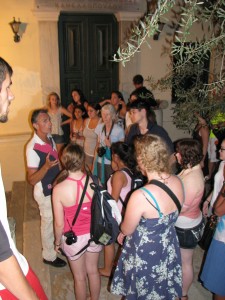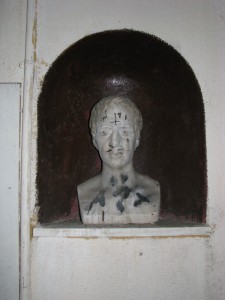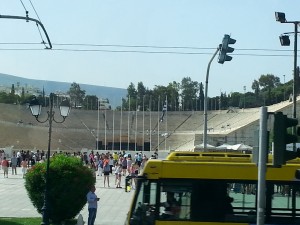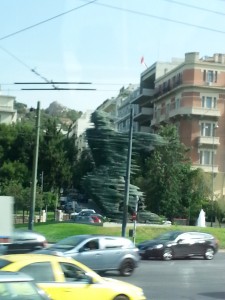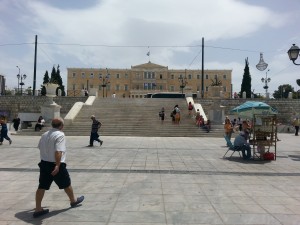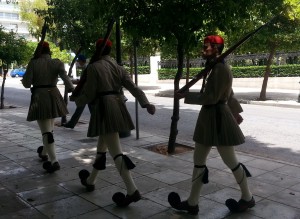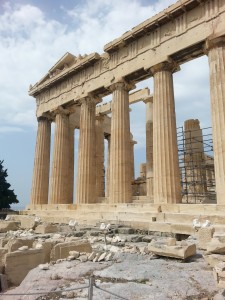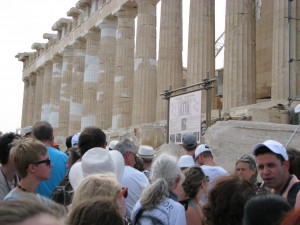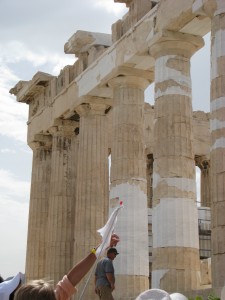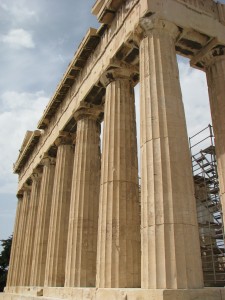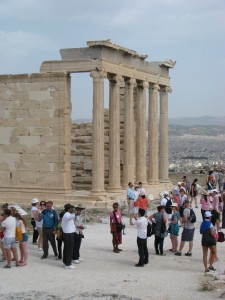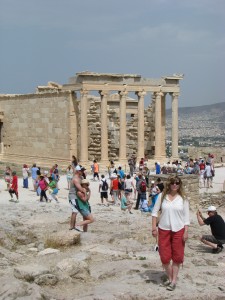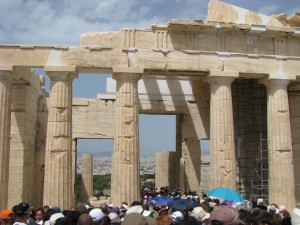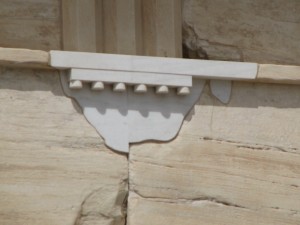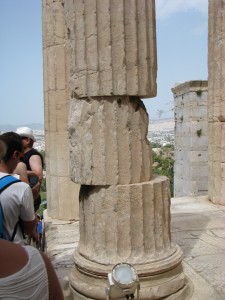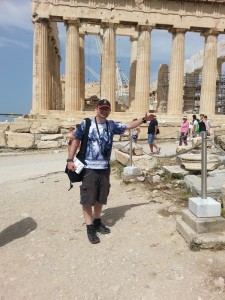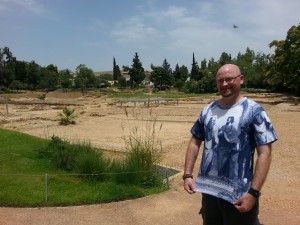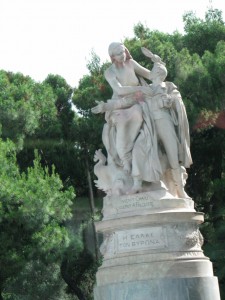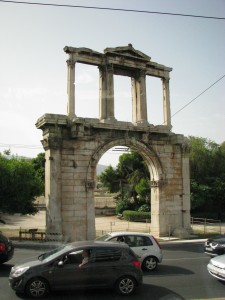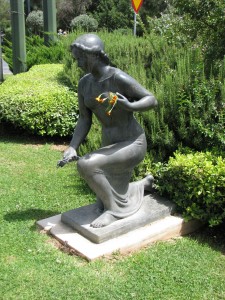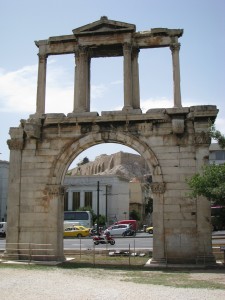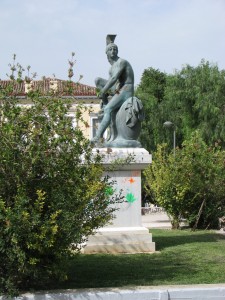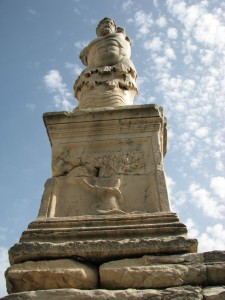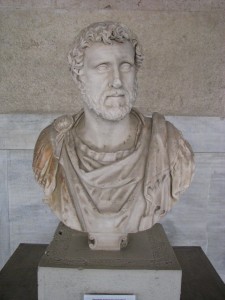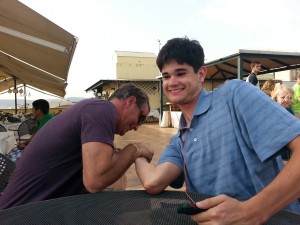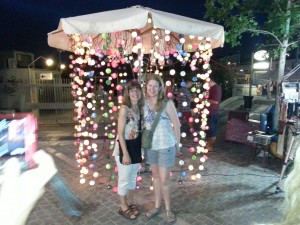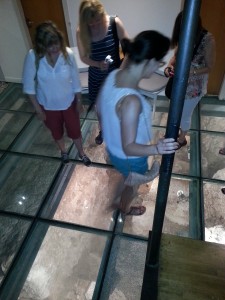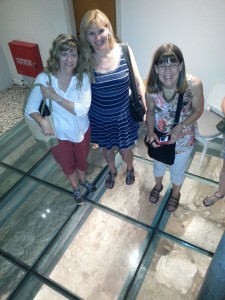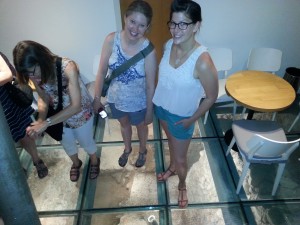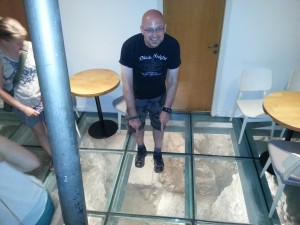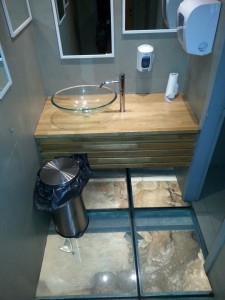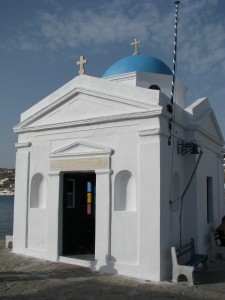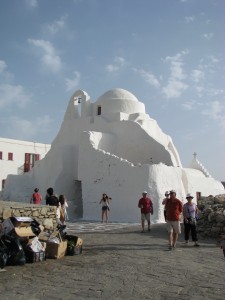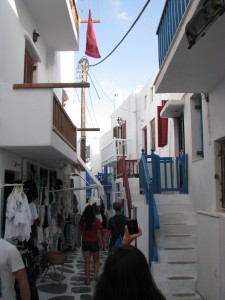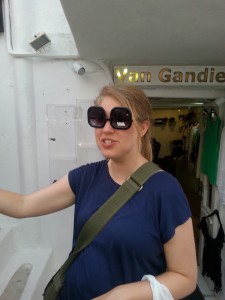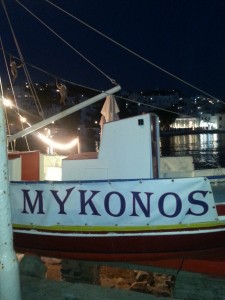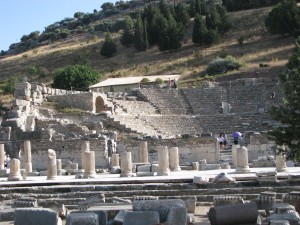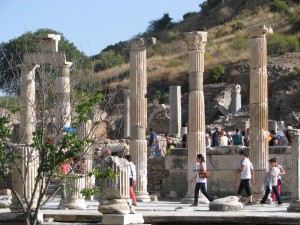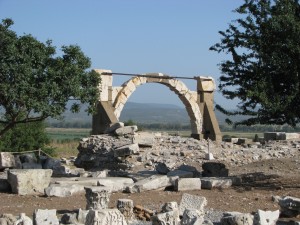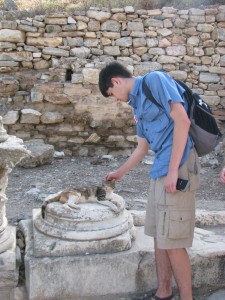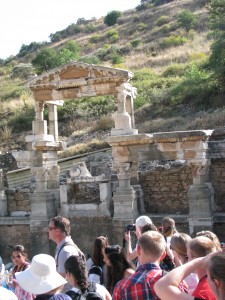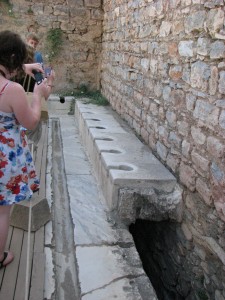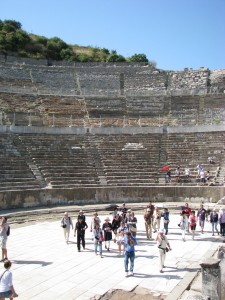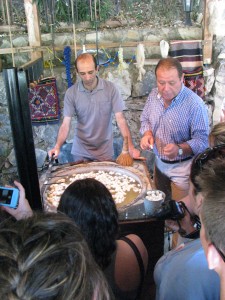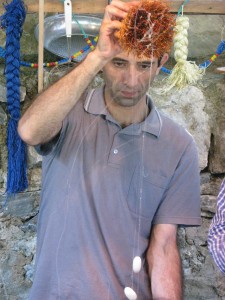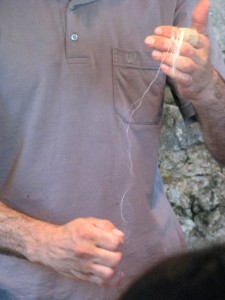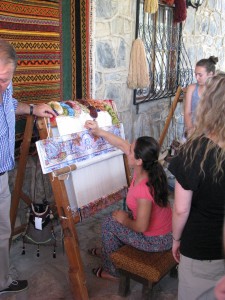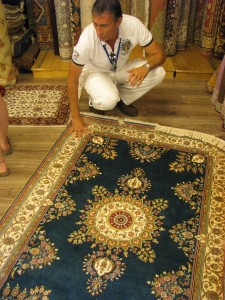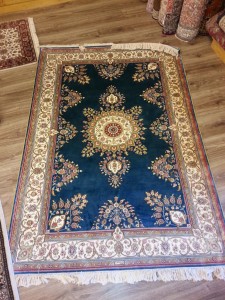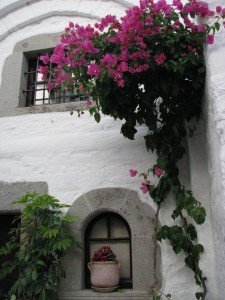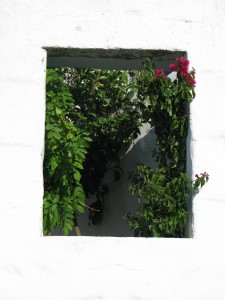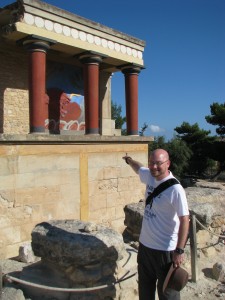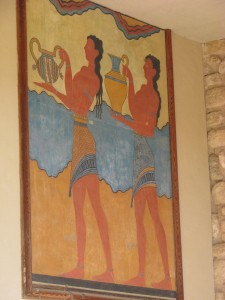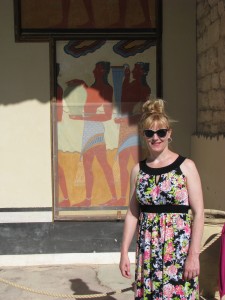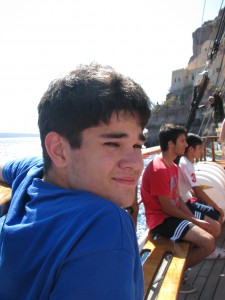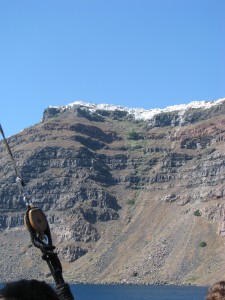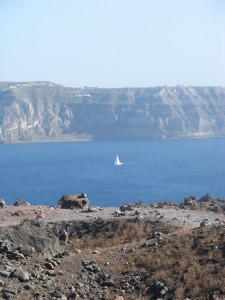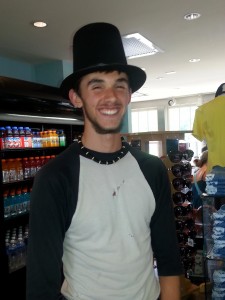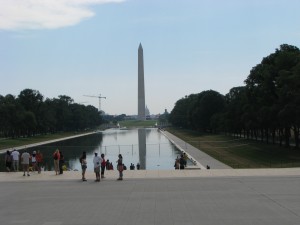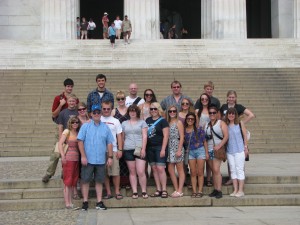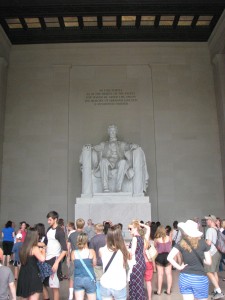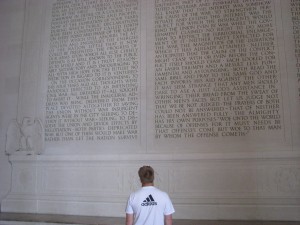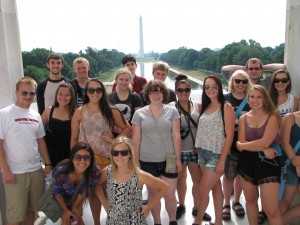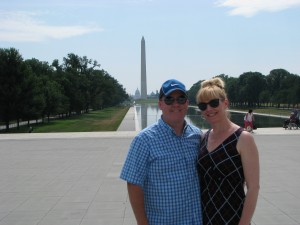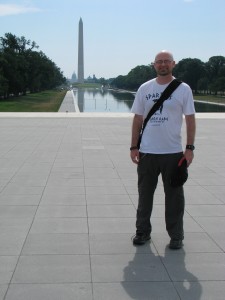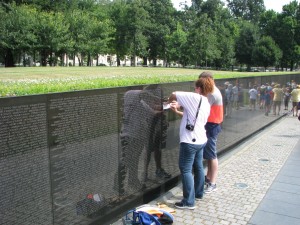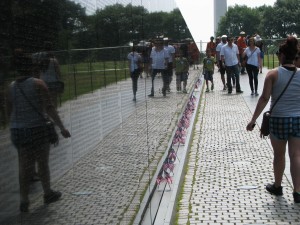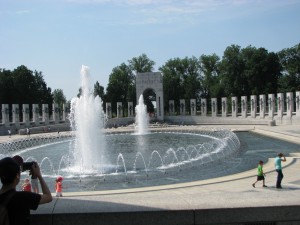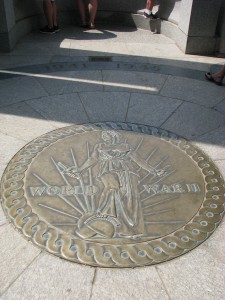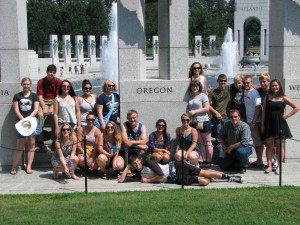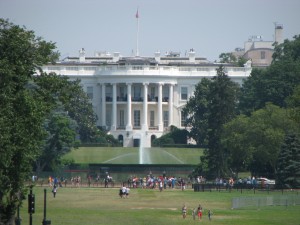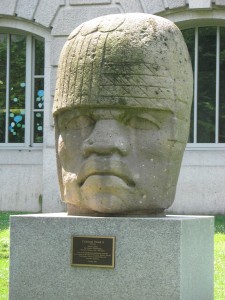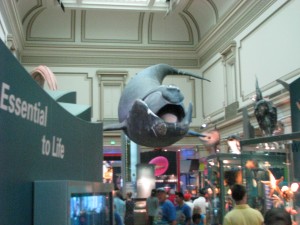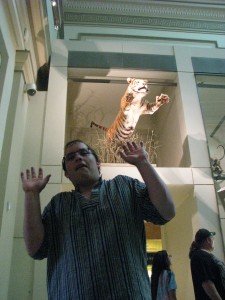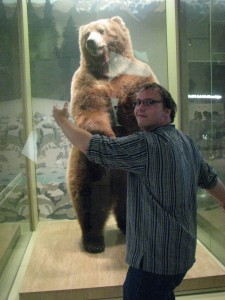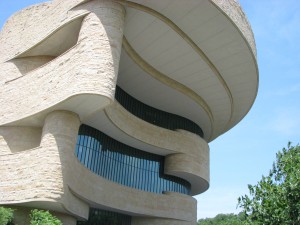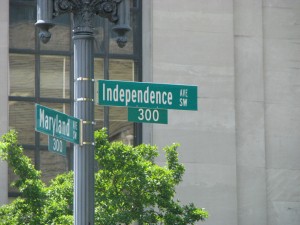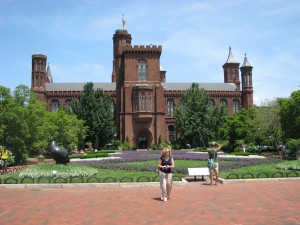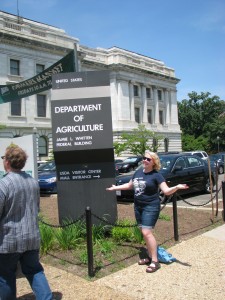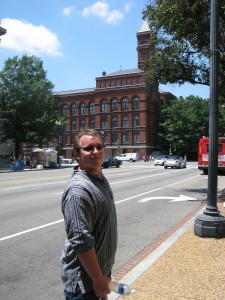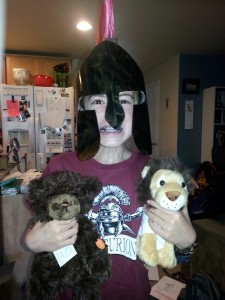Complete Account of the Central High Trip to Italy, Greece, Turkey, and Washington D.C.
/Central High Trip to Italy and Greece, Day 1 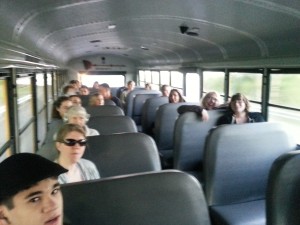 We awoke in time to get to the high school and leave for the airport before dawn, yesterday. Our bus ride was predictably sedate.
We awoke in time to get to the high school and leave for the airport before dawn, yesterday. Our bus ride was predictably sedate.
After running into a couple different friends who, independent of one another, were off to Brazil to see the World Cup, we hopped on our plane without incident and set off for San Francisco.
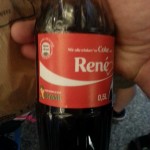 I spent enough on three little bottles of coke at three airports to stock a fridge with soda for a month back home. I very specifically and intentionally told Brian Larson NOT to do the calculation about how much my Coke in Frankfurt cost when the Euros were converted to dollars. He did anyway. Ouch.
I spent enough on three little bottles of coke at three airports to stock a fridge with soda for a month back home. I very specifically and intentionally told Brian Larson NOT to do the calculation about how much my Coke in Frankfurt cost when the Euros were converted to dollars. He did anyway. Ouch.
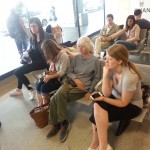 When we arrived in Rome, our body clocks thought it was 6 in the morning. Some of the kids and chaperons were exhausted because they hadn't slept at all on the flights. Personally, as soon as jet engines get fired up, I'm lulled to sleep. This would make me a very dangerous pilot. I slept through take-off on two of our three flights. On the long shot from San Fran to Frankfurt, I did manage to watch Pompeii (research, not a great movie) and Her (really impressive SciFi film that I could never get away with showing in my SciFi Lit
When we arrived in Rome, our body clocks thought it was 6 in the morning. Some of the kids and chaperons were exhausted because they hadn't slept at all on the flights. Personally, as soon as jet engines get fired up, I'm lulled to sleep. This would make me a very dangerous pilot. I slept through take-off on two of our three flights. On the long shot from San Fran to Frankfurt, I did manage to watch Pompeii (research, not a great movie) and Her (really impressive SciFi film that I could never get away with showing in my SciFi Lit 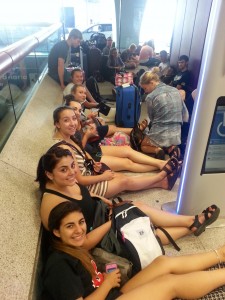 class). I tried to get some writing done on the flight to San Fran and found that the last chapter I'd been working on was only saved in the cloud. How's that for irony? In the clouds and unable to access a document in the cloud. I got it moved to my tablet in San Fran but barely made any headway on the flight to Frankfurt because, well, jet engines.
class). I tried to get some writing done on the flight to San Fran and found that the last chapter I'd been working on was only saved in the cloud. How's that for irony? In the clouds and unable to access a document in the cloud. I got it moved to my tablet in San Fran but barely made any headway on the flight to Frankfurt because, well, jet engines.
When we arrived, after getting our bags, an EF representative connected us with our tour guide. The other group we'll be traveling with was running late, so we waited for a bit in the airport.
The airport is about an hour from downtown Rome, which meant we got to enjoy the wonderful freeways (I'm not being sarcastic. The roads here are in remarkable shape compared to American freeways and highways. I've read that this is because they build them deeper so they absorb a lot more wear and tear. Could be. If so, it's working, because they ware very smooth). The outskirts of the city are filled with farms, empty fields, rolling hills, and the occasional auto dealership selling, among other makes, Fords.
Then we passed into the suburbs. The guide explained that the cost of housing within the downtown area is incredibly expensive, but there's good mass-transit to and from the suburbs, so that's where most if the city's four million people live.
The cars here are almost uniformly tiny. Tad and I had a good laugh about the prospect of being pulled over by a police officer in a car that's smaller than an Aveo and trying to take him/her seriously.
A lot of the apartments were flying Italian flags from their balconies. I wonder if this is a World Cup phenomenon or just a normal display of national pride.
A couple of our students have obviously been raised in the United States in the age of Twitter, meaning that they speak at an American volume and share every thought that goes through their heads. As a twitterer myself, I am sympathetic to the effects it has on our ability to self-edit, but I'm hopeful that these students will reflect on the way our fellow travelers on the airplanes made it through the same transatlantic journey without broadcasting information about their periods, the kinds of medication they are taking, or the degree of pain they felt relative to every minor ailment and travel inconvenience. I plan on pointing this out, as gently as possible, and researching the way they've leaned to behave by the time of the return trip. ...until the jet engines start and I fall asleep.
We went to a restaurant that lacked a lot in ambiance (some of the windows had no glass but were covered in sheets of plastic, and European MTV was projected onto a screen on the wall), but provided good food. It wasn't better than Mangiare's in Independence, though, so I'm looking for something more authentic and unique to Rome/Sorrento/Naples/Florence as we visit those places.
When we arrived at the hotel, after checking in and getting the exhausted kids to their rooms, we had a brief meeting with our tour director about some last minute changes to our itinerary. For example, Pompeii is on strike (municipal workers, I'm guessing) and will be closed the day we were going to go, so John, our director, is flipping some things around so that we will still get to see it. After that meeting, a few of us went down to a local gelato place and I got started on my project to see if I can gain one hundred pounds before we head home. So good!
Now it's nearly midnight here and I'm fading fast. Tomorrow we'll see the Vatican, St. Peter's, the Colosseum, and more. I want to have some energy tomorrow, and my devices do, too, so I'll sign off.
Central High Trip to Italy and Greece, Day 2
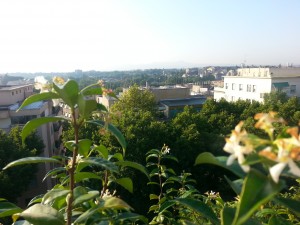 By Neptune's beard and St. Peter's golden key, today was an exhausting, amazing day! Today was all Rome. We woke up early and had breakfast on our hotel's rooftop dining area under a perfectly cloudless sky, watching the city wake up.
By Neptune's beard and St. Peter's golden key, today was an exhausting, amazing day! Today was all Rome. We woke up early and had breakfast on our hotel's rooftop dining area under a perfectly cloudless sky, watching the city wake up.
Then we hopped on the bus and started fighting our way through the city's crazy traffic. I often give my friends in Independence and Monmouth a hard time when they complain about the traffic in our small towns. My basis of comparison is cities like San Diego and Cincinnati, where I've lived, and even cities like London and New York, where I've traveled a handful of times. Rome's level of crazy makes all of those look sedate. While the quantity of cars on the freeway slows traffic just as it would in any city, the local Roman's sense that every rule of the road is a mild suggestion, including stop signs, lane lines, pedestrians, speed limits, designated parking places, and even sidewalks, combined with the sizes of their tiny cars and the huge numbers of scooters and motorcycles, makes Rome feel like a circus on crystal meth. Our driver, Francesco, isn't just good; he's amazing. More than once I was sure he'd clip a car, a telephone pole, or a concrete divider, but he'd manage to squeeze by them by less than the width of the mirrors (which he miraculously managed not to knock off). I am very, very glad I am not driving in this city, and not because gas is around $8 a gallon.
I tried to ignore what was going on in the streets in front of us, and enjoyed a very nice conversation with Kyle Miller about the potential dangers and potential benefits of GMO crops.
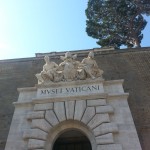 Once in the city center, we headed first to Vatican City. I could have spent another couple hours in the Vatican museum, but I took tons of pictures. The collection is incredible.
Once in the city center, we headed first to Vatican City. I could have spent another couple hours in the Vatican museum, but I took tons of pictures. The collection is incredible.
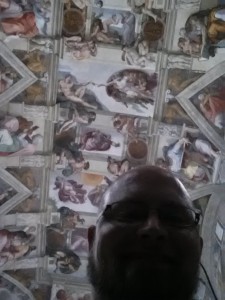 After rushing through the museum, we went to the Sistine Chapel. Now, no one is allowed to take pictures inside the chapel, so I absolutely did not do that. Instead, I bought an over-sized poster of the chapel ceiling, found a room with a high ceiling to hang it in, turned off most of the lights in this room I'd found, and took a couple grainy selfies with my front-facing camera. That's my story, and I'm sticking to it.
After rushing through the museum, we went to the Sistine Chapel. Now, no one is allowed to take pictures inside the chapel, so I absolutely did not do that. Instead, I bought an over-sized poster of the chapel ceiling, found a room with a high ceiling to hang it in, turned off most of the lights in this room I'd found, and took a couple grainy selfies with my front-facing camera. That's my story, and I'm sticking to it.
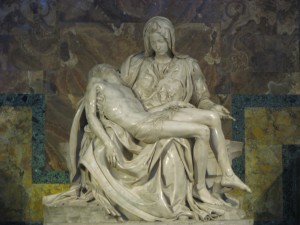 After the Sistene Chapel, we headed down to St. Peter's Basilica. Inside, we saw the Pieta, the seal of the newly sainted Pope John Paul the Second, and a lot of other amazing sculptures.
After the Sistene Chapel, we headed down to St. Peter's Basilica. Inside, we saw the Pieta, the seal of the newly sainted Pope John Paul the Second, and a lot of other amazing sculptures.
One of the surprises of the trip was the paintings in the basilica; from a distance, they don't look much different than the frescoes or paintings on canvas in the Vatican museum. Our guide for this portion of the trip, a great, local guy named Simon, explained that the reason we were allowed to take flash photography in the basilica as opposed to the museum is that our flashes cannot damage the "paintings" in the basilica as they could the paintings in the Vatican museum because the ones in the basilica aren't paintings at all. The originals were all moved into the Vatican museum and replaced with mosaics with such tiny little precious stones that the works look just like the original paintings, only they can withstand flashes and all other kinds of environmental damage and will look just as amazing in another 2,000 or 20,000 years as they did today. I got some pictures in which I zoomed in close enough to see the mosaic work. Astounding craftsmanship.
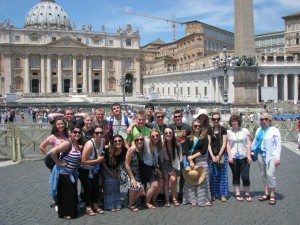 After St. Peter's Basilica, we went out to St. Peter's Square where the Pope regularly speaks. We got to see the Pope's apartments (which are too large and ostentatious for the current Pope's tastes, so he lives in a more modest place down the street). We took some group photos there, had a short break for lunch, and then got back on the bus and headed to the Colosseum.
After St. Peter's Basilica, we went out to St. Peter's Square where the Pope regularly speaks. We got to see the Pope's apartments (which are too large and ostentatious for the current Pope's tastes, so he lives in a more modest place down the street). We took some group photos there, had a short break for lunch, and then got back on the bus and headed to the Colosseum.
It's an incredible structure. Thanks to our guide's descriptions, we were able to imagine what it would have looked like at the height of the Roman empire with 50,000 people inside screaming for the blood of a gladiator. Outside the Colosseum, I bought Noah his first gift. He asked me to get him teddy bears from Italy and Greece because we have a family tradition in which I bring him another teddy bear every time I travel without him, but the Italian bear would have to wait until a toy shop I found later this evening, because I couldn't resist buying him a stuffed lion at the Roman Colosseum. I joked with Terri and Megan Chapell that I am now on the lookout for some small stuffed Christians for Noah to feed to his lion.
After that, we headed to the Roman Forum, the open market which was buried for hundreds of years and has been recently excavated. Here, we not only had to imagine what it looked like at the height of the Empire, but also imagine just how deeply it was buried under sediment from the Tiber River's flooding. Our guide showed us some places where more modern buildings (only a few hundred years old) built on top of older structures now show just where the soil level was before the excavation. 


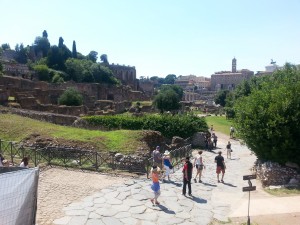

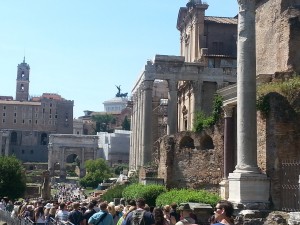
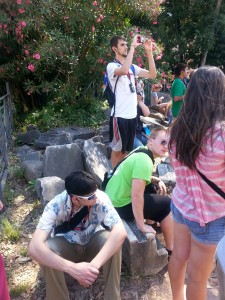
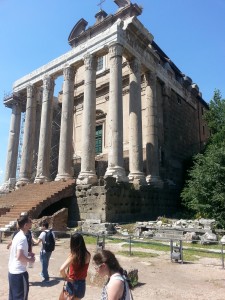
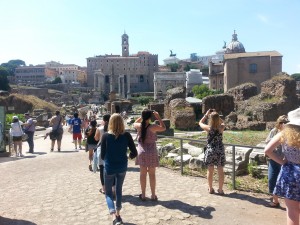
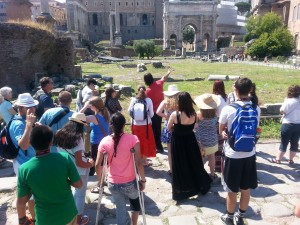
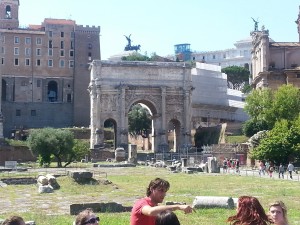

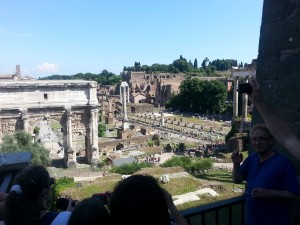
Leaving the Forum, we began to climb. We switched back for some final pictures of the forum from above, then went on to the Spanish Steps. These 153 (159? I can't remember, and I didn't count) steps were actually given to the city of Rome by the French, but they lead down to the Spanish Embassy, so that's how they got their name. 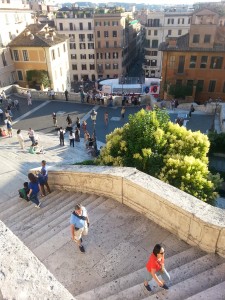 I hiked up the steps despite sore feet because I would kick myself later if I had come so close and then given up some twenty yards from the foot of the steps. Though the view from the top wasn't as good as the view from our hotel's rooftop dining area, the experience was worthwhile. At the top, I got to see some beautiful paintings a gentlemen was desperate to sell me. The price of the one I liked the best started at 180 Euros, so I told him I had to go check with my wife. I didn't mention that she is currently in Oregon (or has she already traveled up to Tacoma to visit her sister?) and the price kept coming down until I could have purchased it for 100. The canvas was probably five feet wide and four feet high, so there's no way I could have lugged it back home, and it depicted a fantastic impressionist image opf Venice, a city we are not traveling to and which I've never seen with my own eyes, so there's no way I would hang it in my house. Still, it was fun to haggle and made me feel like Paige was closer and helping me to be fiscally responsible.
I hiked up the steps despite sore feet because I would kick myself later if I had come so close and then given up some twenty yards from the foot of the steps. Though the view from the top wasn't as good as the view from our hotel's rooftop dining area, the experience was worthwhile. At the top, I got to see some beautiful paintings a gentlemen was desperate to sell me. The price of the one I liked the best started at 180 Euros, so I told him I had to go check with my wife. I didn't mention that she is currently in Oregon (or has she already traveled up to Tacoma to visit her sister?) and the price kept coming down until I could have purchased it for 100. The canvas was probably five feet wide and four feet high, so there's no way I could have lugged it back home, and it depicted a fantastic impressionist image opf Venice, a city we are not traveling to and which I've never seen with my own eyes, so there's no way I would hang it in my house. Still, it was fun to haggle and made me feel like Paige was closer and helping me to be fiscally responsible.
We went to dinner at a much nicer restaurant tonight. They served us more pizza than we could stuff into our faces, and, though it was thin crust which is not my favorite, I put away quite a few pieces because they were there and begging to be eaten.
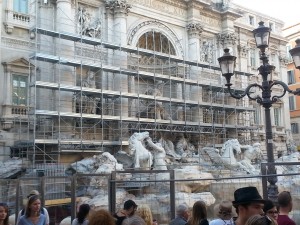 After dinner, we went to another famous church, the name of which escapes me, where hopeful couples are supposed to be able to receive a blessing that will help them conceive children. I told all our students that they were explicitly forbidden from getting pregnant on the trip, so they should steer clear of the blessings. Then we went to the Trevi Fountain, the famous fountain where people are supposed to throw coins to ensure that they get to return to Rome, meet their true love, and marry that true love. It is being renovated, so no one can throw any coins in. So, no true love, no marriage, and no pregnancy for our students any time soon, and I think that's for the best, because they are far too young for such things in this old fogey's opinion.
After dinner, we went to another famous church, the name of which escapes me, where hopeful couples are supposed to be able to receive a blessing that will help them conceive children. I told all our students that they were explicitly forbidden from getting pregnant on the trip, so they should steer clear of the blessings. Then we went to the Trevi Fountain, the famous fountain where people are supposed to throw coins to ensure that they get to return to Rome, meet their true love, and marry that true love. It is being renovated, so no one can throw any coins in. So, no true love, no marriage, and no pregnancy for our students any time soon, and I think that's for the best, because they are far too young for such things in this old fogey's opinion.
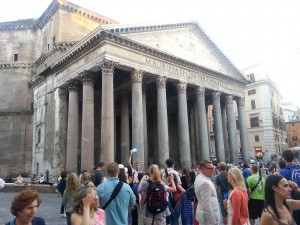 We then went by the old Roman Pantheon, and, though I didn't lug a copy of my book around, I took a selfie with one of the novel's little bookplates. Folks who have read the novel will get the reference to the Pantheon, though the book's pantheon is a slight bit more controversial.
We then went by the old Roman Pantheon, and, though I didn't lug a copy of my book around, I took a selfie with one of the novel's little bookplates. Folks who have read the novel will get the reference to the Pantheon, though the book's pantheon is a slight bit more controversial.
We wrapped up the sightseeing at a famous square with an open market around the fountain of the four rivers (The Nile, Danube, Ganges, and Rio de Plata). The students got to do some more shopping and gelato-eating.
We got back to the hotel at 10:00 and immediately sent the students to bed because we will have an early wake-up call for our trip to Florence tomorrow. We walked about eight miles today, so I'd better post this and go to bed immediately or I will fall face-first onto my little keyboard and all this updating will have been for nothing.
Central High Trip to Italy and Greece, Day 3: Florence
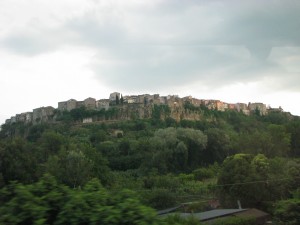 Today we went to Florence. We had to wake up very early (5:45) and be on the bus by 6:45. Our three hour drive took us north through the countryside of Tuscany. It wasn't easy to get good pictures through the bus windows, and the morning fog, though beautiful in its own way, limited our visibility of the tiny, ancient villages planted on the hilltops. The valley of the Tiber River does look a lot like the Willamette Valley, with bales of hay dotting the newly-cut fields. Medieval cities, complete with city walls and Roman aqueducts, climbed up out of the fog and floated over the fields, clashing with the modernity of the banks of solar panels farming the sunlight.
Today we went to Florence. We had to wake up very early (5:45) and be on the bus by 6:45. Our three hour drive took us north through the countryside of Tuscany. It wasn't easy to get good pictures through the bus windows, and the morning fog, though beautiful in its own way, limited our visibility of the tiny, ancient villages planted on the hilltops. The valley of the Tiber River does look a lot like the Willamette Valley, with bales of hay dotting the newly-cut fields. Medieval cities, complete with city walls and Roman aqueducts, climbed up out of the fog and floated over the fields, clashing with the modernity of the banks of solar panels farming the sunlight.
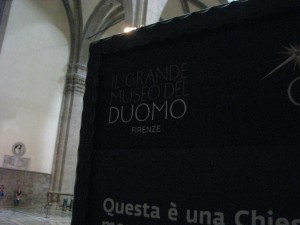 When we arrived in Florence, we parked outside the old city and hoofed it directly to the Cathedral of St. Mary of the Flower, know as Il Duomo because of the massive dome that rises as high as its free standing bell tower. The exterior of the cathedral is covered in ornate, gothic filigree, and I expected the inside to look even busier than St. Peter's yesterday, but the interior was largely empty, the vast space between the central columns accentuating the coolness inside. We walked around the inside of the sanctuary, listening as the local guide described the people in the paintings, tapestries, and stained glass windows (including Dante, one of my favorites), and then we stepped under the dome itself and I think I gasped audibly. The dome is naturally lit by a hole that opens into a smaller tower surrounded by glass, and the interior is covered in a staggering fresco depicting Jesus and all the apostles and saints in Heaven. I tried to capture in on film, but I don't think it's possible; the grandeur of the circular and curved image can't be expressed by two dimensional squares taken from directly below. You'll just have to go yourself.
When we arrived in Florence, we parked outside the old city and hoofed it directly to the Cathedral of St. Mary of the Flower, know as Il Duomo because of the massive dome that rises as high as its free standing bell tower. The exterior of the cathedral is covered in ornate, gothic filigree, and I expected the inside to look even busier than St. Peter's yesterday, but the interior was largely empty, the vast space between the central columns accentuating the coolness inside. We walked around the inside of the sanctuary, listening as the local guide described the people in the paintings, tapestries, and stained glass windows (including Dante, one of my favorites), and then we stepped under the dome itself and I think I gasped audibly. The dome is naturally lit by a hole that opens into a smaller tower surrounded by glass, and the interior is covered in a staggering fresco depicting Jesus and all the apostles and saints in Heaven. I tried to capture in on film, but I don't think it's possible; the grandeur of the circular and curved image can't be expressed by two dimensional squares taken from directly below. You'll just have to go yourself.















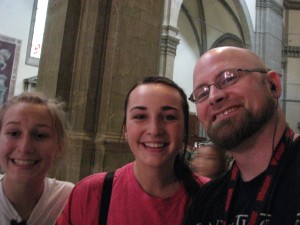 Outside the cathedral, we headed over a few blocks to the former political capital of the city (and even, for the first few years after the unification, the capital of all Italy), a former palace of the Medicis' that's now a museum. Outside, huge sculptures stand on either side of the doorway, another stands in the center of the square, and almost a dozen stand under a three story stone ceiling, exposed on two sides, and freely available to the public. One of the statues guarding the door is a perfect replica of Michelangelo's David (the original is in a local museum), while others depict scenes from Greek/Roman mythology, including a famous image of Perseus standing over the corpse of Medusa and raising up her head in triumph. I took way more pictures than anyone will ever want to see.
Outside the cathedral, we headed over a few blocks to the former political capital of the city (and even, for the first few years after the unification, the capital of all Italy), a former palace of the Medicis' that's now a museum. Outside, huge sculptures stand on either side of the doorway, another stands in the center of the square, and almost a dozen stand under a three story stone ceiling, exposed on two sides, and freely available to the public. One of the statues guarding the door is a perfect replica of Michelangelo's David (the original is in a local museum), while others depict scenes from Greek/Roman mythology, including a famous image of Perseus standing over the corpse of Medusa and raising up her head in triumph. I took way more pictures than anyone will ever want to see.
The guide then rushed us through a street lined with full sized statues of a host of Florence's most famous residents, including Galileo (the reason you believe the world is round), Amerigo Vespucci (the reason you're called an American), Machiavelli (the reason your elected officials work for their largest donors and not for you), Donatello (the artist, not the Teenage Mutant Ninja Turtle), Francesco Petrarca (writer of the Petrarcan sonnets that inspired Shakespeare), and Dante (the reason you picture Heaven and Hell the way you do).










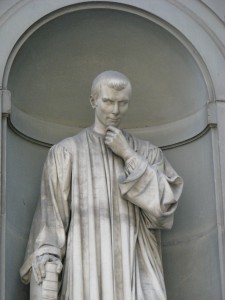 Then our guide whisked us off to the riverbank, where we took some pictures while we made our way to the main footbridge. It's lined with stores that sell jewelry because, as the guide repeated five or six times, the Medici family did not like the smell of the leather work being done by the cobblers selling shoes in the shops there, so they bought them all out and replaced them with jewelers.
Then our guide whisked us off to the riverbank, where we took some pictures while we made our way to the main footbridge. It's lined with stores that sell jewelry because, as the guide repeated five or six times, the Medici family did not like the smell of the leather work being done by the cobblers selling shoes in the shops there, so they bought them all out and replaced them with jewelers.
Next, she led us to a store where they sell finely-crafted leather goods. A worker there gave us a short explanation of how they make some leather goods, including the hardened leather jewelry boxes the city is famous for, and then explained a bit about how to tell real leather from imitation leather goods so our students wouldn't get ripped off. She explained that you cannot tell by smell, since the fakers now spray their faux-leather with a scent that replicates the smell of paraffin wax and tanning chemicals that gives leather its distinct smell. You also can't tell by running a flame over it, as some of the fakers try to assert in their demonstrations, since real leather absolutely does burn, but the fakers run the flame over their wares too fast to burn anything. You also can't tell from a tag that advertizes genuine leather, since, while it would be illegal to print that on fake leather, it's perfectly legal to print it on a small piece of genuine leather, then attach that to a fake leather coat. Instead, she recommended rubbing the suede lining against itself to see if there's friction, since the fake stuff is smooth on both sides, or stretching the leather to see if it has more give in one direction than another. Real leather does, but the fake stuff stretches identically in any direction. This was all interesting, but I came away with the distinct impression that, short of getting ripped off, the fake stuff is almost as good and not easily distinguishable from the real thing, so why pay real leather prices? I guess that just shows I'm a low-rent kind of guy. I would look like a buffoon in a leather jacket anyway.
Once we left the leather goods store, I wandered around the city with a bunch of our guys; Brian, Kyle, Corbin, Rusty, Sean, and Michael. I really enjoyed these guys and got a big kick out of their senses of humor. They are teenage boys, so their favorite kind of sight-seeing doesn't focus on architecture or history, but on the relative attractiveness of the young women we passed in the streets. I tried to impart my old man wisdom, pointing out things like the fact that a nice smile can make someone remarkably more attractive, and a sour face can make even a super-model look tiresome. Also, I told them that some people, despite their potential attractiveness, wear shockingly unflattering clothing in an effort to get the attention of possible suitors. But the guys are young, so they tended to focus only on the most predictable features, then tease one another for their differing tastes.
The strolling and shopping and picture-taking were all delightful but largely uneventful until we ran into a scam artist who caused us some trouble.
He approached us and started giving us trinkets. These, he assured us, were gifts for which we would not be charged. I was initially concerned that he was going to pick out pockets, but I'd misidentified his con job. Instead, he walked away, leaving us with this assortment of goods, then came back to ask us for donations. He played on our guilt and a few of us gave him some coins, but we clearly weren't satisfying his desired return on investment. However, after we walked away, one of the guys said, "He didn't give me back my change." As I probed about the nature of this exchange, we were walking further away from the grifter, and it took me a little while to figure out that our student had opened his money-belt to find a coin for the man, and the guy just reached in and snagged a bill. When the student asked for change, the guy pretended not to understand and walked off. Our kid had been robbed of 20 Euro for goods that might have been worth one. Because we were already short on time, my first inclination was to treat this as an expensive lesson for this student to learn, and I should have done just that because our guide later informed me that we could have walked into a waiting gang or something, I just couldn't let that go, so we backtracked, found the guy, and I told him that he would either return the student's money or we would go find a police officer together, explain the situation, and then he would return the student's money. He tried to offer us 10 Euros, then 15, but I said that we expected 20. He was not happy with me, but we got the student's money back. By then we were late to the rendezvous point with the rest of the group, and the tour director was very unhappy with me. Once I explained the situation, he understood, but he told me that next time I should let the student eat the loss, because confronting these street vendors could end in beatings, knifings, etc. Seen in that context, the loss of 20 Euros doesn't seem so big. Lesson learned.
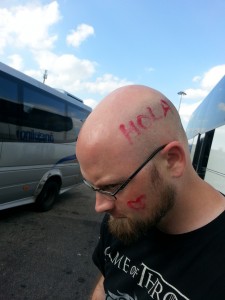 We got back on the bus and made the 3 hour trip back to Rome. On the way, I fell asleep. Someone who shall remain nameless, but who teaches Spanish in a classroom not too far from mine, decided to draw on my face with bright red lipgloss while I slept. I wasn't aware of it at all until we arrived as a rest stop and everyone was very interested to see if I would walk into the shop. Suspicious, I checked the bus' mirror and found that I had a heart drawn on my cheek and the word "Hola" drawn on my head in big red letters. It was a little tricky to know when I had successfully wiped it off because I was blushing so much. I am plotting my revenge.
We got back on the bus and made the 3 hour trip back to Rome. On the way, I fell asleep. Someone who shall remain nameless, but who teaches Spanish in a classroom not too far from mine, decided to draw on my face with bright red lipgloss while I slept. I wasn't aware of it at all until we arrived as a rest stop and everyone was very interested to see if I would walk into the shop. Suspicious, I checked the bus' mirror and found that I had a heart drawn on my cheek and the word "Hola" drawn on my head in big red letters. It was a little tricky to know when I had successfully wiped it off because I was blushing so much. I am plotting my revenge.
Back in Rome, we had a nice dinner, and our waiter, Jean Carlo, was very interested in whether or not one of our students, Emily, was married. I told her that I expected she might hear a proposal by the end of the evening, and I asked her what she'd say. Her parents will be pleased to hear that she said, "I'd politely refuse."
Tomorrow we get to go on a tour of the catacombs of Rome before we head off to visit Pompeii, then on to Sorrento where we'll spend the night before catching the ferry to Greece. It's going to be another big day!
Central High Trip to Italy and Greece, Day 4: Catacombs, Pompeii, and Sorrento Today's post should be short (if I can prove capable of brevity), both because tomorrow I have to be up by 5:45am, and because today's best sight-seeing is beyond my powers to relay in words.
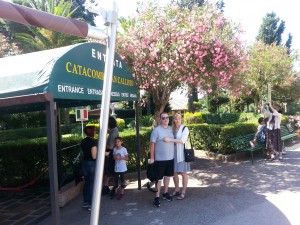 This morning we got up and had another nice breakfast on the rooftop of our hotel in Rome. Then we checked out and loaded the bus. We traveled through Rome to the catacombs, the system of tunnels where the early Christians buried their dead in the second, third, and fourth centuries. I was envisioning something like the pictures I've seen of the catacombs of Paris, with skulls and other bones lining the walls, but the early Christians had to stop using the catacombs outside of the city walls due to the danger of invading armies in the fourth century, and during the middle ages they were basically picked clean by Europeans looking for relics to take back to their home churches. When modern archeologists went through and tried to preserve whatever they could to make the catecombs a historical site for tourists, they had to remove the last remaining bones because tourists would steal them for souvenirs. So, no bones. The ancient frescos painted by the early Christians are still on some walls, though, and the labarynth of tunnels going down some fifty feet under the ground made for fascinating viewing. It was also the coolest I've felt on this entire trip, and that was wonderful. The Church forbids anyone to take pictures inside, ostensibly because it would be disrespectful to do so in a sacred site. This piety leads to the sale of lots of coffee table books in the gift shop, too.
This morning we got up and had another nice breakfast on the rooftop of our hotel in Rome. Then we checked out and loaded the bus. We traveled through Rome to the catacombs, the system of tunnels where the early Christians buried their dead in the second, third, and fourth centuries. I was envisioning something like the pictures I've seen of the catacombs of Paris, with skulls and other bones lining the walls, but the early Christians had to stop using the catacombs outside of the city walls due to the danger of invading armies in the fourth century, and during the middle ages they were basically picked clean by Europeans looking for relics to take back to their home churches. When modern archeologists went through and tried to preserve whatever they could to make the catecombs a historical site for tourists, they had to remove the last remaining bones because tourists would steal them for souvenirs. So, no bones. The ancient frescos painted by the early Christians are still on some walls, though, and the labarynth of tunnels going down some fifty feet under the ground made for fascinating viewing. It was also the coolest I've felt on this entire trip, and that was wonderful. The Church forbids anyone to take pictures inside, ostensibly because it would be disrespectful to do so in a sacred site. This piety leads to the sale of lots of coffee table books in the gift shop, too.
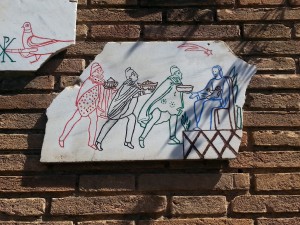
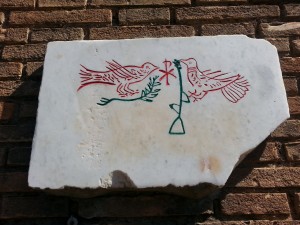
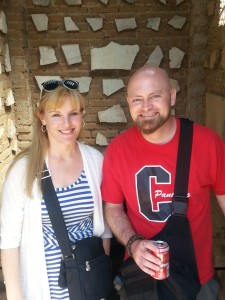 Next we drove to Pompeii. On the way, our tour director, John, showed us a BBC documentary about the last days of Pompeii to get us all ready. I knew the gist of the story of the destruction of Pompeii and Herculanium by the eruption of Mt. Vesuvius in 79 A.D., but I learned a lot of details, including the involvement of Pliny the Elder. I'd read about him as a scholar and early scientist, but I didn't know he was a Roman naval admiral who happened to be staying nearby and led an attempted water rescue of people trying to escape the city (No dice. They lost all visibility in the ash cloud and had to turn back). Appartently it was Pliny's nephew who wrote the best account of the day's events.
When we arrived at Pompeii, the new city built on the lava that filled in what would have been the sea port outside of the original Pompeii, we had lunch and did a little gift shopping. We were all struck by the obscene nature of some of the trinkets for sale, something we have not seen in Florence or Rome. Not to be too graphic, but there were lots of scultptures of penises, many with wings. There were also keychains showing male and female figures in various compromising positions, some of which moved to make the point even clearer. Later we would learn that this is no coincedence; it's a reference to some of the findings in the excavated city, where 29 brothels have been discovered in the portions of the city that have been dug up (who knows how many there were in total in the city?) and where some frescos above the tiny bedrooms remain to this day and leave very little to the imagination. Predictably, the kids got a huge kick out of that. Even our leaders got into it, taking pictures of one other in the tiny rooms. Despite the fact that the pyroclastic explosions that incinerated everyone instantly almost two thousand years ago would have cleaned eveything to a near-surgical degree, I still refused to sit on those beds on principle. Ew.
Next we drove to Pompeii. On the way, our tour director, John, showed us a BBC documentary about the last days of Pompeii to get us all ready. I knew the gist of the story of the destruction of Pompeii and Herculanium by the eruption of Mt. Vesuvius in 79 A.D., but I learned a lot of details, including the involvement of Pliny the Elder. I'd read about him as a scholar and early scientist, but I didn't know he was a Roman naval admiral who happened to be staying nearby and led an attempted water rescue of people trying to escape the city (No dice. They lost all visibility in the ash cloud and had to turn back). Appartently it was Pliny's nephew who wrote the best account of the day's events.
When we arrived at Pompeii, the new city built on the lava that filled in what would have been the sea port outside of the original Pompeii, we had lunch and did a little gift shopping. We were all struck by the obscene nature of some of the trinkets for sale, something we have not seen in Florence or Rome. Not to be too graphic, but there were lots of scultptures of penises, many with wings. There were also keychains showing male and female figures in various compromising positions, some of which moved to make the point even clearer. Later we would learn that this is no coincedence; it's a reference to some of the findings in the excavated city, where 29 brothels have been discovered in the portions of the city that have been dug up (who knows how many there were in total in the city?) and where some frescos above the tiny bedrooms remain to this day and leave very little to the imagination. Predictably, the kids got a huge kick out of that. Even our leaders got into it, taking pictures of one other in the tiny rooms. Despite the fact that the pyroclastic explosions that incinerated everyone instantly almost two thousand years ago would have cleaned eveything to a near-surgical degree, I still refused to sit on those beds on principle. Ew.
The ruins are amazing. The catecombs we saw in the morning were 1600 to 1900 years old, but the city of Pompeii was already a seven hundred year old city when it was destroyed in 79 A.D. It was so well-built, and so well-preserved, that much of it still stands essentially intact today. It felt incredible to place a hand on a marble column that had stood for 2600 years. To think, at 700 years old, Pompeii was already older than any city in the United States when it was destroyed almost two thousand years ago! There might be someone capable of conveying just how cool the ruins of Pompeii are with nothing but words, but I am not that person. When I get hme it's going to take days to go through my pictures, crop them, select them, and share them, but trust me; the Pompeii pics will be worth it. I even found some marble blocks that were decorated with large, disk-shaped raised areas, making them look like 2000 year-old Legos. (I got so excited about my Lego analogy that I confused a student and then had to explain that these dots were just decorations and the city had not been built using interlocking bricks.)






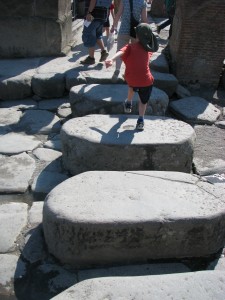




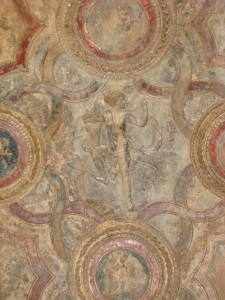

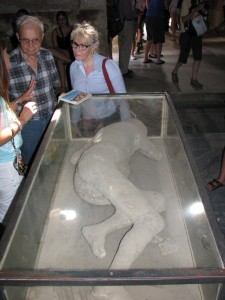





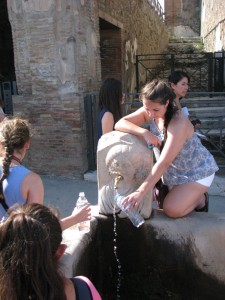
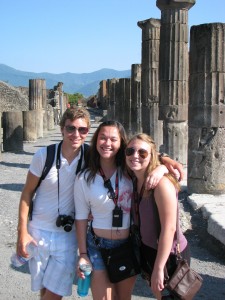


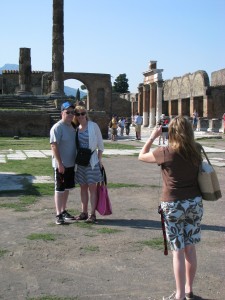






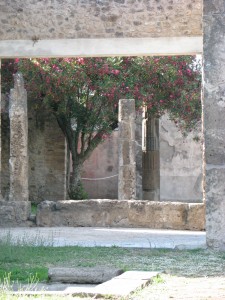
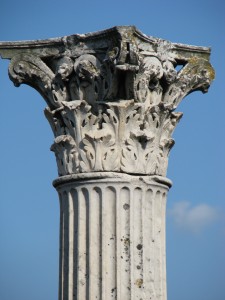

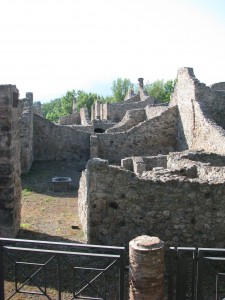

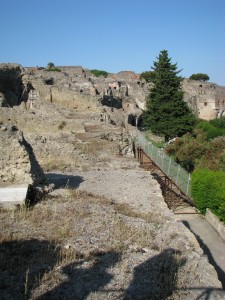 From Pompeii, we drove around the city of Naples and along the curvy road that took us up through Sorrento to our hotel here in a small town overlooking the city. Tomorrow we'll catch a ferry early in the morning and travel to Capri, then on to Greece. Tonight we are enjoying a beautiful hotel with a view of the ocean, the Sorrento skyline, and some islands off the coast (Capri and another whose name I don't know). From the balcony outside the hotel's dinning room, I watched the sun set into the Mediterranean behind a sliver of island on the horizon. Red, gigantic, and rippling in the day's heat, it seemed to plummet faster than any setting sun I can remember. I couldn't get any satisfying pictures that captured it's magnificence because I'd left my good camera with my things when we came down for dinner, so I just had to enjoy the sunset with my stupid eyes and try to hold onto it with my low-tech, non-solid-state memory, and I decided that was perfect.
From Pompeii, we drove around the city of Naples and along the curvy road that took us up through Sorrento to our hotel here in a small town overlooking the city. Tomorrow we'll catch a ferry early in the morning and travel to Capri, then on to Greece. Tonight we are enjoying a beautiful hotel with a view of the ocean, the Sorrento skyline, and some islands off the coast (Capri and another whose name I don't know). From the balcony outside the hotel's dinning room, I watched the sun set into the Mediterranean behind a sliver of island on the horizon. Red, gigantic, and rippling in the day's heat, it seemed to plummet faster than any setting sun I can remember. I couldn't get any satisfying pictures that captured it's magnificence because I'd left my good camera with my things when we came down for dinner, so I just had to enjoy the sunset with my stupid eyes and try to hold onto it with my low-tech, non-solid-state memory, and I decided that was perfect.
One final note: Dinner was pretty terrible. Pasta with a sweet tomato sauce, overcooked chicken, and (I kid you not) French fries. I think the hotel is so confident that people will love the location, the marble floors in each room, the rooftop pool, and, of course, the amazing view, that they don't have to have proper bath towels in the bathrooms (these things are a thin as your average cloth napkin) or sauce on their pasta that didn't come out of can. And you know what? They're right. I will bring Paige back to this very hotel if I can. The desert after dinner wasn't anything we would call desert. They put some apricots and cherries in large crystal bowls filled with water. Just water. Fruit floating in water. Because the hotel is so beautiful, I was fine with this choice and even glad that I've seen at least one dish I am capable of preparing when I get home. Fruit floating in a bowl of water will probably exhaust my cooking skills, but now I can claim it's my own special dish that I learned about in Italy. 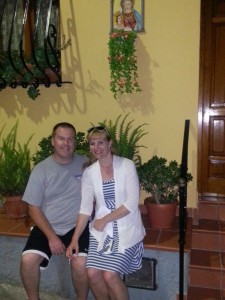
Before curfew, we headed down a long flight of steps, through a thin corridor between some posh apartments, to the waterfront where we got some gelato. Floating fruit is fine, but gelato is better.
Central High Trip to Italy and Greece, Day 5 and 6, Capri to Delphi Day 5: Capri
Today we hit the road early, traveling a short distance from our hotel down to Sorrento, then getting on a ferry and traveling the three miles out to the island of Capri.
Capri is where the famous pants get their name, though the accent is on the first syllable in Italian. It's not only a home to fine fashion, but a resort island for the very, very wealthy. This is due to a combination of factors; first, the island has been an escape since the Emperor Tiberious. During the eighteen hundreds, it was a get-away for intellectuals (like Lenin and Gortskey) who had ideas that might get them in trouble back home. Second, it's stunningly beautiful, a high peak of rock sticking out of the sea where any home has a view of the warm, bright blue waters of the Mediterranean Sea. Third, it's been designated as a historical site, so no one can build a new home on the island. Consequently, space there is precious. A house costs about $50,000 per square yard! Hotel rooms range from $400 to $5500 dollars per night! Among other consequences of these high prices, the paparazzi can't afford to camp out on the island, so celebrities can come and play in the sun without worrying about being bothered too much. We didn't see any celebrities on our trip, though the prices in some of the little shops indicated that we were not the intended target demographic the storekeepers were aiming for.
Before we explored the island, we got off the ferry and climbed right on to a smaller boat that took us for a tour around the island's coast. There are only two places where boats can dock, one on each side. The rest of the island rises out of the sea so steeply that it hangs out over the water, often creating little underwater caves that can be explored by scuba divers. Natural arches hung above us, and one of them was hewed into a slab of rock sitting just off the coast. It was large enough that our little boat passed through it. Our guide told us that it was good luck to kiss someone under the arch. I missed Paige quite intensely. (Don't worry, Hon. I didn't kiss anybody else. That would have been bad luck.) One the far side of the island, we saw some yachts anchored that were larger than any house on the island. I think that's how people with an obscene amount of money have circumvented the building restrictions. These were the kinds of ships that are only available to people who have to hire teams of other people just to count their money. As a 99%er, I felt more disgust than envy. One of those yachts represents dozens of of brand new, state-of-the-art schools, or food for who knows how many hungry kids. This feeling was only exacerbate when the guide told us that there's a housing crisis on the island for its native inhabitants because all the houses are being purchased by ultra-rich people from other countries who don't live in them for more than a few days a year. I don't bedrudge people the fruits of their labors, but there does come a point at which it's ridiculous to the point of being disgraceful. Once someone is buying multiple unoccupied houses so that others can't have homes, I think we've crossed that point. But maybe I'm just channeling Lenin because he lived on the island (in the home of an obscenely wealthy benefactor. Natch!).
Back on the island itself, we took a cable car up to Anacapri, the village built on the topmost point of the island. We walked through the narrow streets lined with high-end shops to a beautiful garden built by the heir of a family of German WWI war profiteers, the Krupps. The man escaped to Capri because he was gay in an era when that wouldn't have been tolerated. In fact, when it came out, the scandal called him back to Germany, where he killed himself (or worse, was killed by his family), and the garden was renamed the Julius Caesar Garden to try to erase the memory of the man from the island entirely. This is confusing, since Julius Caesar never came to Capri, and his son Tiberious' palace was on the other side of the island. Luckily, we live in a more enlightened age, and the Krupp Gardens have regained their original name. The small garden is certainly beautiful, but I can't help but wonder if the nude statues, all female, are holdovers from a time when this poor man had to live in the closet, or from a family that was trying hard to hide his orientation after his death. Maybe I'm reading too much into those.
We had a little time to shop before taking the cable car back down the mountain. Besides high-end fashions, jewelry, watches, and especially sandals, Capri is also known for making all kinds of things with the lemons that grow there. These things were huge, around twice the size of a lemon I could buy back home. The students enjoyed lemonade and lemon granitas, and then we headed down to the village by the dock, where we had lunch. There was some confusion caused by an optional set menu that's part of a price EF has worked out with the restaurant, and the normal ala carte menu options some folks ordered, only to find that these did not include their 3 Euro glasses of water (Ouch!), but the food was very good, and I was able to post a few pictures to Facebook despite the restaurant's spotty WiFi.
From Capri, we took a different ferry, this one traveling much further, to the city of Naples. I really wish we'd had time to explore Naples. A giant medieval castle stood right across the street from the dock, and a nice gentleman on the ferry saw my excitement about that and informed me that there's a large new archaeological dig going on right on the other side of the castle to uncover a far more ancient Roman port. He also said that the city has a great catacombs that can be toured, too. I've decided I'll have to come back and visit someday, maybe with my brother's wife's side of the family, the Napolitanos.
We then had a very long bus ride from Italy's central west coast to the tip of the heel of the boot on the east side, the port of Brindisi. Along the way, people caught up on sleep or enjoyed the scenery. In Brindisi, we boarded the boat after a long wait in an un-air-conditioned building with three story glass walls on either side. Why they chose to make people wait for security in a greenhouse, I will never understand, but once we got into the ferry, a nine story monstrosity, we had to wait in the hot cargo hold for the elevators. Because I'm a land lubber, I didn't realize that the flights of stairs would all be the short ones, and the thought of climbing nine stories with all my bags did not appeal. It turned out that the students who decided to skip the elevators were both the brave ones and the smart ones. I was a sweaty mess by the time I got to my cabin, but I took a quick shower before dinner and felt refreshed. My cabin itself is not only air conditioned, but it's much larger than I expected. My point of reference was the overnight train car I rode in from Paris to Barcelona one our last EF tour. I haven't spent a night at sea since I was a little boy, and that was in the small cabin in a family friend's boat off the coast of San Diego. This room is larger than that whole boat, complete with a shower, two beds for the one of me, and a small desk where I am writing currently. The only amenities I am lacking are a refrigerator for my warm sodas and WiFi so I can send this out to you all. Tomorrow I'll post two updates if the hotel in Delphi has WiFi. I could use the lack of WiFi as an excuse to go up to the top deck again, where I could enjoy the starlight and the cool night air a bit more (while tip-toeing around the Roma [formerly known as Gypsies] who do not buy tickets for cabins but purchase tickets that allow them to sleep on the deck or in stairwells in bad weather). Instead, I think I'll enjoy the very gentle rocking of the ship and catch up on some sleep.
Day 6: Travel to Delphi
I caught up on sleep by sleeping right through my alarm and waking up in a panic, but it turned out to be the perfect day to sleep in, because, though I missed breakfast, we were still on the ship until 2:30 in the afternoon.
We disembarked in Patras, met our new bus driver, Nico, and drove the windy roads (I think all Greek roads are windy on account of the rocky, mountainous terrain) to a nice little restaurant off the beaten path by a pebble beach. There, we had a leisurely late lunch (I had an excellent cheese pie, some red snapper, and a salad, tried bites of everyone else's food, and then barely managed to avoid explding all over the restaurant like the guy in Monty Python's The Meaning of Life). After lunch we got to swim in the Ionian Sea, the part of the Mediterranean of the west coast of Greece. (It borders the Adriatic Sea, which is on the east coast of Italy. The Aegean Sea is on the east coast of Greece. That's where we'll cruise around at the end of the week.) The water was a cloudy, bright topaz blue. I swam out a bit myself, floated around a little, then came back in and found a place in the shade. People with my skin tone and hair style should not sunbathe. The students spent a lot more time in the water than I did, and only three of them stepped on/ bumped into sea urchins that poked them with sharp spines that had to be removed like splinters. No burning reactions to the sea urchins were reported, so they were better off than jelly-fish stings, and it didn't seem to stop them from enjoying themselves.
We got back on the bus and climbed up to Delphi. If I'm understanding correctly, Delphi is really three cities; the largest, most modern one is the port city. Further up the hills is the touristy hamlet we're staying in now. The ruins we'll visit tomorrow are even higher up. Our tour directer, John, who is still with us on this leg and for the rest of the trip, explained that if we went even higher up and just over the top of the mountain, there's a ski resort because the mountain does get snow in the winter.
This part of Delphi is perfect four our tour group. We had a good dinner in a restaurant next to our hotel. Then we had time to walk the main drag where all the tourist-y shops are. The prices are much better than in Italy, so everyone loaded up on gifts for loved ones back home (and a few t-shirts and trinkets for ourselves). Because the town has one main thoroughfare, we don't have to worry about the kids getting lost, though we still make them stay in groups just in case. John took a group of them down to the local disco to do a little dancing. That was very nice of him, since there were only a few kids who were interested in paying the cover price and there weren't any chaperons particularly inclined to go listen to techno music and watch teenagers jump around (jump around, jump up, jump up and get down). Most of the students were more interested in the hotel's excellent WiFi connection, since there wasn't any WiFi on the ferry, and many of the kids finished their shopping and found spots in the lounge where they can log in to their various devices. I can't criticize them too much, since I'm doing the same thing, but for some reason I'm getting good reception in my room (ha ha!).
There's World Cup soccer blaring out on the street below my hotel balcony. Greece is playing Ivory Coast. When they scored, the whole town shouted together. It was a great moment. Now Greece has won, the town has gone to sleep, and everyone will be happy tomorrow!
Central High Trip to Italy and Greece, Day 7: Delphi to Athens
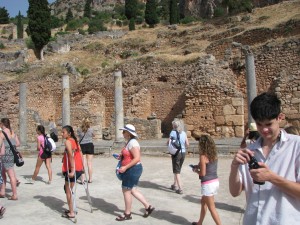 Today we had a casual breakfast in the modern village of Delphi, then took a short bus ride up to the ruins of the ancient temple high in the mountains above. It was very hot, 90 degrees and climbing even in the early morning, and the trip through the ruins involved quite an ascent on paths lined with reflective white marble, so I was baking quickly. Our guide was excellent, giving the students a good primer on the role of the oracle in the ancient world, and the way an oracle's advice was treated by a culture that valued free will and logic. The person who gave out the advice, a woman called a sybil, would only do so once a month. She would go down into the basement of the temple and breathe the gases that came up from a volcanic fissure. Modern scientists have evaluated the gases and have found that they were pretty mild, so the idea that she was filled with the voice of the god Apollo (from which we get the word "enthusiasm," meaning to be filled with god) either had to do with the poer of suggestion and her belief in her role or from the god Apollo acutally posessing her (depending on your belief in such things) and not in a chemical reaction to the gases. Once she was filled with this enthusiasm, she come up into the temple and simply answer people's questions. The trick was asking the right question. If you didn't get information you needed, you'd have to wait for a month to try again. In the meantime, you would live not just with the 1500 people who were permanent residents of Delphi, but with the 5000 visitors who had come from all over the world looking for advice. This provided such a great opportunity for ideas to be shared that Delphi came to be known as the "womb of civilization." It was also called the "center of the world," but the Greek word for "center" has been mistranslated by medeival and rennaiscance scholars to "belly-button of the world." Wrong, but cool. Our guide contended that "umbilical chord of the ancient world" would have been more fitting, since the city provided the nutrition, in the form of ideas, for the developing brain of civilization.
Today we had a casual breakfast in the modern village of Delphi, then took a short bus ride up to the ruins of the ancient temple high in the mountains above. It was very hot, 90 degrees and climbing even in the early morning, and the trip through the ruins involved quite an ascent on paths lined with reflective white marble, so I was baking quickly. Our guide was excellent, giving the students a good primer on the role of the oracle in the ancient world, and the way an oracle's advice was treated by a culture that valued free will and logic. The person who gave out the advice, a woman called a sybil, would only do so once a month. She would go down into the basement of the temple and breathe the gases that came up from a volcanic fissure. Modern scientists have evaluated the gases and have found that they were pretty mild, so the idea that she was filled with the voice of the god Apollo (from which we get the word "enthusiasm," meaning to be filled with god) either had to do with the poer of suggestion and her belief in her role or from the god Apollo acutally posessing her (depending on your belief in such things) and not in a chemical reaction to the gases. Once she was filled with this enthusiasm, she come up into the temple and simply answer people's questions. The trick was asking the right question. If you didn't get information you needed, you'd have to wait for a month to try again. In the meantime, you would live not just with the 1500 people who were permanent residents of Delphi, but with the 5000 visitors who had come from all over the world looking for advice. This provided such a great opportunity for ideas to be shared that Delphi came to be known as the "womb of civilization." It was also called the "center of the world," but the Greek word for "center" has been mistranslated by medeival and rennaiscance scholars to "belly-button of the world." Wrong, but cool. Our guide contended that "umbilical chord of the ancient world" would have been more fitting, since the city provided the nutrition, in the form of ideas, for the developing brain of civilization.
The temple grounds included far more than the temple itself. The people who would visit would bring gifts of statuary and inscribed stone slabs to make sure their reputations or announcements were being broadcast to the wider world. Specific polises had their own treasuries, not as banks to keep accessible wealth, but as storehouses of their gifts so others could see how wealthy and powerful they were. People would also bring beloved slaves there and make legal declarations that the slaves were now being transferred into slavery to Apollo. This set the slaves free and ensured that they could never be made slaves again, since they were technically someone else's property still.
After the region was Christianized, the people took marble from the abandoned temple as building materials, but eventually Delphi was abandoned entirely. In the early 1800s, when a new village was located on top of it and the inhabitants were completely unaware of the ruins beneath the dirt under their feet, the site was rediscovered, and the Greek government and various historical preservation societies went through a long process to force the inhabitants of the village to relocate to the village further down the mountain (modern Delphi, where we stayed the night). The people didn't want to leave their family homes, of course, so eventually the government resorted to passing legislation that didn't force them to move, but made it illegal for them to do any repairs to any homes that were on top of the ruins. One good earthquake later, and the residents agreed to move because their homes were falling apart and they couldn't do anything about it.
The site has only been partially excavated because it's impossible to uncover the layers of ruins without building upon another layer beneath, and the intention is to make the ruins visible, not replace them with a replica of the temple and its grounds. Consequently, the ruins are very stark, the skeleton of its former self. Its beautiful in its own way, made even more striking by the fact that its so high up in the mountains, so there's an amazing view of the valley below where thousand of olive trees grow, nicknamed "the sea of olives." I took lots of pictures of the theater above the temple, where theatrical and musical performances would have been held, because I wanted to show my friends who work in theater the amazing view that would have made up the backdrop for the presentations. They will be unsatisfying, since they'll just be shots of mountains as seen from high on another mountain, but folks will just have to trust me that the theater faced out on such a view.
We walked back down the hill to the museum built below the temple grounds. I always feel rushed when we go to museums on these tours; I would like to take my time, read every placcard stare at the items being exhibited, but my pace would be way too slow fo teenagers, so EF plans for their attention spans. This time, since they allowed people to take pictures in his museum, I tried to rush through and take pictures of everything to enjoy later. I over-did it and ended up standing around outside wishing I'd gone more slowly. I'm going to particularly enjoy sifting through those pictures.
We left Delphi and traveled about a half an hour to a nice restaurant where many of us tried the "mixed plate," a sampler platter with fried cheese, spinach pie, dolmathakia (grape leaves around rice and meat), an eggplant ball, and a dalop of tzatziki to dip things in. I didn't like the spinach pie, so I gave it to another student who loved it, but I thoroughly enjoyed the rest.
After lunch we had a three hour drive to Athens, so John, our tour director, used the time to fill us in on the process to board the cruise ship and the details about the optional excursions we'll be able to go on while visiting the different Greek islands and a coastal town in Turkey. I'll still have to see a price list before I make my final decisions, but I'm excited about the options!
The hotel in Athens is great, complete with a rooftop restaurant with a view of the acropolis. We got into Athens and had some time to walk around downtown before a late-ish dinner. We all wanted to wait to do tonight's walking tour of the city until after dark, because it was 95 degrees under an oppressive sun. John took us to Mars Hill, where we had an amazing view of the city below us and the acropolis above us. He then walked us around to a cathedral in the heart of the city, then to the parlaiment building where we got our pictures taken with the guards who stand on duty there, Buckingham-palace-style.
Unfortunately, a minority of our kids were rude, whining about the heat and not listening when John was explaining things, and he ran out of patience with them. He called off this walking tour he was giving us out of the goodness of his heart and brought us back to the hotel. I pulled all our students apart from the other group that EF has joined to ours, and I chewed them out. Then Roseanna took a turn. Then Amanda. By the time we sent them all to their rooms with no evening free time to wander the city and no social time to linger in the hotel's lobby, I think they were feeling pretty chastened, but we'll find out tomorrow.
Now I'm exhausted because getting angry with kids is very tiring. Tomorrow we get to see the acropolis, so that will be wonderful. I'm looking forward to sending a picture of myself to my dad to thank him for bringing me here 26 years ago!
But now, sleep.
Central High Trip to Italy and Greece, Day 8, Athens, Athens, and More Athens
Best day yet!
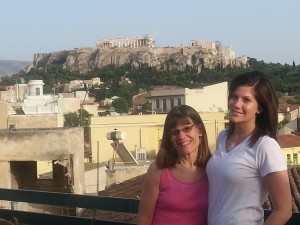 Today we got up relatively early, had a bit of breakfast, and got onto the bus. The kids were very subdued because of the chewing-out they received last night, but they all behaved impeccably. I hope that continues, and I expect it will because most were being very good beforehand and the few who were acting out now seem appropriately chastened.
Today we got up relatively early, had a bit of breakfast, and got onto the bus. The kids were very subdued because of the chewing-out they received last night, but they all behaved impeccably. I hope that continues, and I expect it will because most were being very good beforehand and the few who were acting out now seem appropriately chastened.
We started with a guided bus tour of Athens. Our local guide, a guy named Dionysus (after St. Dionysus who was, in turn, named after the god Dionysus), showed us many of the sights we could walk to later during our free time. I got really excited when he told us that they discovered Aristotle's school a few years ago, began the excavation, and only opened it to the public recently. We had a chance to hop off the bus to take some pictures of the huge arena where the first modern Olympic games are held, and where the annual Athens marathon ends each year. I got a mug for my friend Eli, Central's track coach, and then immediately regretted not getting a couple more fro my friends Bill and Marin who are big-time marathon runners. I did get some pictures for them of this cool modern art sculpture of a runner made of sheets of glass, creating the impression that he's being blurred by his high speed.
The bus took us back past Constitution Square and the parlaiment, which John took us to last night, and then up to the Acropolis. It was blistering hot today, but the kids had been scolded about therir complaining, so they didn't bring it up, and I didn't want to be hypocritical, so I didn't mention it, either. I had prepared by wearing a light blue and white shirt I purchased in Delphi and by cutting off about an inch of my beard last night. No need to carry around that extra insulation, I figured.
The Acropolis is one of the most amazing placed in the world. The name refers to the whole hill, or at least the top of the hill, and there are a number of ancient structures in various states of restoration on top. Much of the Parthenon, the largest temple to Athena on the summit, is still surrounded by scaffolding, and a big crane is standing right in the middle of it. I wished the kids could have seen it without all that modern metal inside, but they still got to take it in and learn about the cool design tricks the Athenians used to create optical illusions that make the builting look bigger and to prevent waves of heat from distorting the view of the surface. I hope a few of them will internalize that and be able to recall it later despite the fact that they first heads it while their brains were boiling in their heads. The Acropolis also houses a smaller temple to Nike which includes columns that were sculpted to look like women from the city of Arcadia. According to the story, when the Athenians conquered the city of Arcadia on their way to war with the Spartans, the architect of that temple looks at the slaves who were brought home and thought they were the most beautiful women in the world, so he designed the pillars to look like them. The summit also includes another structure I'd completely forgotten about; the monument entrance. This looked like a temple itself, but it was just the gateway into the area where the others stood.
The buildings on the Acropolis, especially the Parthenon, need to be repaired. There are the predictable reasons for this (the city's pollution damaging the marble, the normal ravages of time), and then there are the reasons that make me furious. From least furious to most furious: A) The first renovators didn't know what they were doing, so they used iron bands to hold pieces of marble together. Those rusted and oxodized the marble. That one's just ignorant. B) When the British helped the French and Russians to liberate Greece from the Ottoman empire, they also decided to liberate a lot of the stone work. One gentleman (er, colonial jerk) was the worst. His name was Lord Elgin, and he had his men break the frieses and colums, then pick up some of the pieces to take home. When he ran into financial trouble, he sold the pieces to the British Museum, and they came to be known as Elgin Marble. The British government has since returned almost all of the Elgin Marble, and it's now housed in the Acropolis museum at the bottom of the hill and down a few blocks (pardon the pun). Still, the stealing of the marble, and the destructive way it was done, makes my blood boil. Ah, but it gets worse because C) the Parthenon was once blown up! It stood in very good condition, complete with a roof, until the 17th century (around 2000 years), until the Ottomans used it as a storehouse for gunpowder. While the summit was being shelled by the invading Venicians, the explosions caught the gunpowder on fire and blew up the temple from the inside out. Storing gunpowder in a 2000 year old masterpiece of art and architecture? That's a kind of stupidity that's worse than Lord Elgin's colonial greed!
I got some wonderful pictures at the top of the summit, including a few with people holding my novel. Free marketing! I also had a friend take a picture of me with my arm out as though it was wrapped around another guy's shoulders, and I sent a copy off to my dad who brought me to the very same spot 26 years ago so I could show him that he was with me in spirit on the top of the Acropolis with the Parthenon behind us.
The descent was made very difficult by the fact that the line moved very slowly in the oppressive heat. Once we'd made it about twenty minutes and halfway through the trip that was supposed to take ten in total, we learned why. Not only are there an excess of visitors at that time because the people who are visiting from cruise ships come through in a rush at that point in the day, and not only was there an extra large church group leaving with us, but at the choke-point in the Monument Entrance, a young man (luckily not ours) had suffered some kind of heat stroke and had just plopped down there. His guide and group made no effort to move him (perhaps they didn't think they could do so safely), they just poured their wterbottles over him and stood around him, forcing the hundred of people trying to leave to merge down to single file to get past them. I was very worried that our tour director, John, would get angry with us again for not meeting another deadline, but he seemed to understand (or is so frustrated with us that he has stopped caring).
After the Acropolis, our guide took us down to a jewelry shop where EF has a deal with the owners who make gold and silver personalized pendants shaped like Ionic columns with the wearer's name transliterated into Greek. They were pretty expensive, so I don't think anyone bought one. I thought of getting three, one for myself, for my wife, and for our son, but I realized we'd probably never wear them and Paige would be angry about the nearly $200 it would cost.
After the shop, John gave everyone maps and pointed out locations we might want to visit once again, and then we were set free. Some folks went straight back to the hotel. I'm sympathetic because it was blazing hot, but I really think they missed out on a lot. I took off with one of our students, Michael Willis, and we had to hurry because the first site I wanted to see was all the way across town and closed at 2:30. We ended up having quite an adventure because the site was so far away that it was off the map, and when we got to the spot John had directed us to, we started asking locals for directions. "Do you know where we can find Aristole's school? It's not a modern school. It's an archeological site. The Lyceum? We were told it's around here." I was even wearing a shirt depicting Aristotle and Plato in Rafael's painting "The School of Athens" (I know. Philosophy major geek), so I could point to him on my shirt, but most people either didn't speak English, had no idea what we were talking about, or gave us incorrect and conflicting directions, so we wandered all over that part of the city. It was so hot that I bought a cold Coke at one newstand, then drank half of it and put it in my bag, then bought another to replace the warm soda. Michael was smarter and bought water.
We finally found the site tucked away between some large apartment buildings and government offices. It was mostly an open pit with the slightly raised bits of the walls of the original building, but I loved it. I got a tone of pictures both of the ruins and of all the placards explaining the place, and I even took some pictures of a couple flowers there so I could "send flowers" to my wife for our 15th wedding anniversary that were from Aristotle's garden, a nice if feeble gesture from one former philosophy major to another.
Next, Michael and I walked all the way down past Constitution Square, Parlaiment, and some really sketchy public bathrooms near the subway station, to Hadrian's Arch and the Temple of Zeus. The temple had been a gift from this Roman emperor to the city of Athens, thanking them for putting him up while he stayed in the city studying philosophy. In turn, they'd built him this cool monument to thank him for staying with them. Michael and I took a lot more pictures, then hit the road again. Notice: All of this sight-seeing was outside in the 100 degree weather. We did re-apply sunscreen. It was not enough. We're both cooked medium well.
After the Temple of Zeus, we picked up a map from a kiosk which guided us to a family owned restaurant where we could get lunch. We both had amazing gyros (one of the best I've ever eaten) and sodas with real ice cubes! Not only that, but our waitress was nice enough to fill my water bottle with more of the precious crystalized water. I tipped generously. Next, Michael wanted to see the Greek Agora. I wasn't as excited about it, but I was totally wrong. It was amazing. An agora is a big, open marketplace, and this site housed that and a lot more. Inside, the preservationists had built a small museum to protect some of the more intact scultpures and relics. Not only did it have drinkinbg fountains with cold water, but the stauary was incredible. Scultptures of gods and rulers from 400 B.C. were just standing out there, inches from our faces. We took a lot more pictures (sensing a trend? Michael is an aspiring photographer. I have a bad memory). Then we walked all the way around the perimiter of the agora and climbed a hill up to the Temple of Dionysis, a smaller version of the Parthenon that still has its roof intact (because no British lords decided to steal part of the temple, and no Ottomans decided to store anything explosive inside). Along the way we made friends with a guy from Hong Kong, and at the top we made friends with another woman from Hong Kong who may have been part of the same group. She was just back from the Greek Isles where we will go tomorrow, and she gave us some tips about things we had to be sure to see.
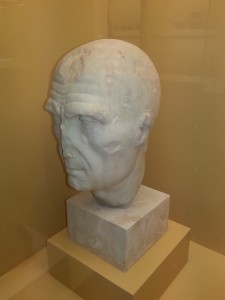
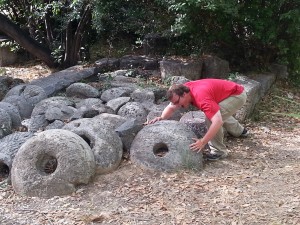
We had to be back to the hotel by 6:30, and we made it by 6:15. I'd taken more than 700 pictures, plus the ones I took on my phone (thank the gods for big SD cards). I told Michael we probably wouldn't have time to shower before the group meeting scheduled to take place before dinner, but when I got back to my room I found that I didn't really have a choice. I had sweat through all my clothes. All of them. I was repulsive to myself.
After the world's quickest shower and change, we made it to the meeting where John went over the various options for excursions during the cruise, gave out our luggage tags, and went over some more logistics. Then we had a quick dinner and I hit the road again, this time with a group of adults and with the sun blessedly down. I went with a group that was all ladies, so it felt just like one of our English department meetings, but with cooler scenery. We did a little shopping on a street where vendors have set up roadside stands to seel their original artwork, and then we went to a restaurant that the ladies had found, right across from the Greek Agora, where they had giant deserts. I ordered my first chocolate souffle (highly recommend). The waiter came over and asked Roseanna Larson to come with him in a very business-like way, as though she were in trouble. She got up from the table and walked to the back of the restaurant, where he pointed down the stairs to what I presumed was the kitchen. I thought, "If this guy even says something untoward to Roseanna, Tad is going to kill me." Instead, she came back and invited us all down to the basement... where there was a glass floor and an archeological site going on right under the restaurant. In fact, when I went into the restroom down there, the glass floor continued into the foyer area, making it the coolest bathroom I've ever been in.
When we came back to the hotel, the ladies went to bed, but I went up to the roof and enjoyed the company of the teachers and chaperones from the group from Moses Lake. They're a very cool bunch.
Despite the fact that I have to be up in only a couple of hours, I can't imagine today being much better, though I do wish I'd been able to spend my anniversary with my wife. After today, I can't wait to bring Paige here and show her everything I found. But we should come back in the winter.
Central High Trip to Italy and Greece: Days 9, 10, 11, 12 and 13
Day 9
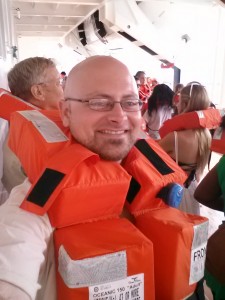 I had a bit of a scare this morning because I slept through my alarm and woke up four minutes before I had to be on the bus to leave for our cruise. There's never a good morning to be late, but today was particularly bad, since the cruise ship will not wait. I'd packed my bags and even laid out my clothes last night, so I was able to be dressed and on the bus just as the director was saying, "Okay, good morning, guys," but I felt terrible for setting such a bad example.
I had a bit of a scare this morning because I slept through my alarm and woke up four minutes before I had to be on the bus to leave for our cruise. There's never a good morning to be late, but today was particularly bad, since the cruise ship will not wait. I'd packed my bags and even laid out my clothes last night, so I was able to be dressed and on the bus just as the director was saying, "Okay, good morning, guys," but I felt terrible for setting such a bad example.
Most of the morning was dedicated to disembarking. We drove down to the pier, got our bags onto the ship (tagged bags were delivered to our rooms for us). We wandered around the ship for a little while, finding the many restaurants, the pools on the top deck (the 9th), etc., until the cabins had been prepared after the last group of travelers. My only 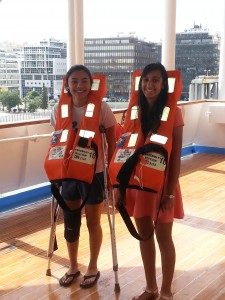 disappointment was finding that WiFi on the ship cost 6 Euros per hour, so I wouldn't be able to keep parents updated on each day's events. I consoled myself by getting the unlimited non-alcoholic drinks package and drowning my digital sorrows in sodas and virgin strawberry daiquiris. Once we could got into our cabins, we took the life jackets we found inside and participated in a safety drill (just making sure we knew how to put them on and which lifeboats to report to in case of an emergency at sea), before gathering in the large auditorium on the fifth floor where the activities director, a jubilant woman from the UK who impressed as all with her ability to slip effortlessly into at least six different languages, welcomed us aboard and described many of the ship's amenities. The another presenter described the various excursions we could go on when we reached each island. Then we had a buffet lunch and some downtime before we arrived at the island of Mikonos.
disappointment was finding that WiFi on the ship cost 6 Euros per hour, so I wouldn't be able to keep parents updated on each day's events. I consoled myself by getting the unlimited non-alcoholic drinks package and drowning my digital sorrows in sodas and virgin strawberry daiquiris. Once we could got into our cabins, we took the life jackets we found inside and participated in a safety drill (just making sure we knew how to put them on and which lifeboats to report to in case of an emergency at sea), before gathering in the large auditorium on the fifth floor where the activities director, a jubilant woman from the UK who impressed as all with her ability to slip effortlessly into at least six different languages, welcomed us aboard and described many of the ship's amenities. The another presenter described the various excursions we could go on when we reached each island. Then we had a buffet lunch and some downtime before we arrived at the island of Mikonos.
Mikonos is famously picturesque, and our tour director took us for a short walking tour up to the famous windmills that stand above the city. Then he set us free and encouraged us to get lost on the island. That's not hard to do, he explained, because the village was intentionally designed to be a maze so that invading pirates would get lost and the locals could escape. That is not a joke. It really is a labyrinth of white walled, thin pedestrian corridors, none of which are at right angles and many of which end in dead ends. I wandered around with Rusty, Ian, and Michael, and we found Amanda Laister and pulled her into our group. We made our way through the little streets first to a restaurant John had recommended, then found it was too expensive. We went down to the shops along the shoreline (partly to be sure we could find our way back), but discovered they were, in some cases, even more expensive. A nice maitre'd at one of them told us about a place higher up in the honeycomb of side streets where we could find what he called "fast food." We found it, and though it was prepared quickly and handed to us across a counter, it was better than any fast food we could possibly find in the US. Instead of paying 22 Euros for lamb kebabs down at the shore, I had the most amazing lamb kebabs I've ever eaten for on 2 Euros.
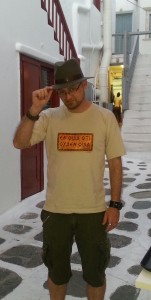 As we left the island, everyone helped me pick out a hat with a widder brim so I wouldn't brun when I climbed the volcano on the island of Santorini in a few days, since I'd chosen that excursion. I also wanted a white t-shirt, and Rusty was willing to backtrack with me to pick one up before we left.
As we left the island, everyone helped me pick out a hat with a widder brim so I wouldn't brun when I climbed the volcano on the island of Santorini in a few days, since I'd chosen that excursion. I also wanted a white t-shirt, and Rusty was willing to backtrack with me to pick one up before we left.
We made it back to the ship around 9, and I'm going to sleep early-ish (11:00) because we have a couple of very busy days ahead of us.
Day 10
This morning we woke up very early (5:30am) because we'd landed in Kuradasi, Turkey. We disembarked and met our guide, Emir, and he entertained us all with tons of musical references to 60s and 70s rock songs woven into his introduction as we rode the bus into the Turkish countryside to go to the ruins of the city of Ephesus. These were some of the most impressive ruins we've seen. They aren't quite as well preserved as Pompeii, but they rival it in scale, and they have been restored in some cases so we could see much of the city without too much imagination. The most impressive part to us language arts teachers/book nerds was the famous library of Ephesus, the third largest library in the ancient world. The front of the structure has been largely restored, and inside you could see where the scrolls were kept, though it would have looked more like a multi-story bank vault with shelves around the walls rather than stacks of shelves speard out in a wide room in a modern library. I had a student pose with a copy of The Sum of Our Gods so I can show that the book has made it into the library of Ephesus.

The amphitheater is huge and is in such good shape that modern musicians like Pavarrati and Sting have done concerts there. We convinced David Halloway, a chaperone from the Moses Lake group and a choir teacher, to sing a bit so we could hear the acoustics, and I ran high up into the cheap seats to film it and get a sample of the sound. The video turns out to be too big a file to post, so you'll have to trust me that the acoustics were perfect.
After we left Ephesus, we went to a place where they make traditional rugs out of silk, wool, and cotton. We were given a demonstration on the way that silk is extracted from the moth's eggs, then a demonstration of a rug being woven. I tried to catch some video of the woman's hands as she wove because it was such a virtuoso performance, but I'm not sure the video will truly show haw fast her hands were moving and how it all fit into the pattern she was checking on the loom above her. We learned about the density of the knots they pack into every square inch depending on the material they are using. Most striking to me, we learned that it takes about eight months for a skilled weaver to make one small rug. These rugs are too expensive for me to purchase one, but, considering how long they take to make, I am worried about the wages these women are paid. I can't buy a $600 - $1000 rug, but after the cost of materials and the cut for the men who own the companies, even if the weavers see half of the remainder, at 40 hours a week for 8 months (1,280 hours) that's less than $.25 an hour. That ain't right.
When we left the carpet makers in the countryside, we returned to Kuradasi and had a bit of free time at the grand bazaar before we had to be back to the ship. This turned out to be one of the trip's low points, because an overly-aggressive salesman got ahold of one of the student's credit cards and then pressured him into agreeing to a couple hundred dollars of good the student didn't really want. I confronted the salesman and tried to get the student's money back, then called the bank and got their advice (return the goods and count it as a fraudulent charge), then run back to the ship and barely make it in time. It was an awful moment for the poor kid, and he was really miserable about it, but we explained the situation to his mom over the phone, and she calmed him down. I just hope he remembers the great tour guide we had in Ephesus and the nice people at the carpet place so that his whole memory of Turkey isn't overwhelmed by one jerk's behavior. Frankly, I expect he'll get all his money back, but I am not looking forward to the charges on my phone bill for the emergency call to our tour director and to the student's bank. I have a feeling those will hurt.
That bit of drama resolved, I caught a nap and grabbed some grub before we landed on the island of Patmos. Most of the students were taking that opportunity to go to the beach, and a few had paid for the guided tour of the Cave of the Apocalypse and the monastery. I decided I would save some money but still see the monastery by climbing up there by myself. Our tour director, John, told me that it would take about a half and hour to walk up there at a good clip. That was technically true, since it took about forty five minutes to go up and about fifteen to come back. It was very, very steep going and hot as all get out. Tad Larson had joked that I should find somebody's scooter with the keys still in it and borrow that to make the climb. Sure enough, about a third of the way up I saw a scooter with the key still in it. I took a picture of it to show Tad, but I didn't take the 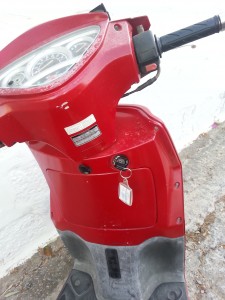 scooter (which I would have crashed anyway). Though I hadn't been interested in going there when we'd heard the descriptions of the excursions, since it was on the way I stopped by the entrance to the Cave of the Apocalypse, the cave dwelling where John the Elder wrote down what would become the Book of Revelations. A nice guy on a scooter slowed down enough to give mne directions to a shortcut off the main road that was the old stone path used by the monks before the asphalt road was made. That was shorter, though harder going. Byt the time I got to the top of the island I was cursing John and thinking the adventure would be a bust, especially when they charged me a small admission fee I wasn't expecting. but the monastery was completely worth visiting. It's simultaneously a medeival castle and a working monsatery. The doors are the tiny variety designed when your average guy was 5 feet tall, and stone steps lead up to battlements with crenelations like most castles, but inside, the walls are covered in plaster and painted white like most of the houses on the islands, and the monks who live there grow bright flowers in every sunlit corner. The sanctuary they still use for mass is beatiful, covered in ornate byzantine-style artwork depicting various saints and angels climbing the arches toward the ceiling. A museum in the monsatery showed relics from the 5th and 6th century, but at this point in the trip, those felt relatively recent. One particular piece jumped out a me, though, They have a mitre worn by a particular bishop specifically for the service called "The Descent into Hades" (which I assume if the Greek Orthodox equivalent of the Good Friday service) and the hat had all this ornate needlework that created a kind of three dimensional freize of Christ descending into a grey pit around the hat's edge covered in people looking up and looking sad. It was worth noting that the people didn't look they were in pain, and the mitre wasn't decorated with tongues of flames, because this perspective of Hades predated Dante's rings of torture and was more similar to the Greek Hades or the Jewish Sheol. As Bishop-wear goes, it was pretty heavy metal, too.
scooter (which I would have crashed anyway). Though I hadn't been interested in going there when we'd heard the descriptions of the excursions, since it was on the way I stopped by the entrance to the Cave of the Apocalypse, the cave dwelling where John the Elder wrote down what would become the Book of Revelations. A nice guy on a scooter slowed down enough to give mne directions to a shortcut off the main road that was the old stone path used by the monks before the asphalt road was made. That was shorter, though harder going. Byt the time I got to the top of the island I was cursing John and thinking the adventure would be a bust, especially when they charged me a small admission fee I wasn't expecting. but the monastery was completely worth visiting. It's simultaneously a medeival castle and a working monsatery. The doors are the tiny variety designed when your average guy was 5 feet tall, and stone steps lead up to battlements with crenelations like most castles, but inside, the walls are covered in plaster and painted white like most of the houses on the islands, and the monks who live there grow bright flowers in every sunlit corner. The sanctuary they still use for mass is beatiful, covered in ornate byzantine-style artwork depicting various saints and angels climbing the arches toward the ceiling. A museum in the monsatery showed relics from the 5th and 6th century, but at this point in the trip, those felt relatively recent. One particular piece jumped out a me, though, They have a mitre worn by a particular bishop specifically for the service called "The Descent into Hades" (which I assume if the Greek Orthodox equivalent of the Good Friday service) and the hat had all this ornate needlework that created a kind of three dimensional freize of Christ descending into a grey pit around the hat's edge covered in people looking up and looking sad. It was worth noting that the people didn't look they were in pain, and the mitre wasn't decorated with tongues of flames, because this perspective of Hades predated Dante's rings of torture and was more similar to the Greek Hades or the Jewish Sheol. As Bishop-wear goes, it was pretty heavy metal, too.


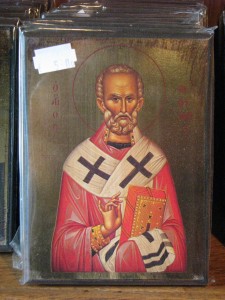
I left the monastery and made it back down the hill at a much faster clip. By then the sun was starting to set, so it was cooler in the long shadows, too. I felt really good about the accomplishment. Plus, I was excited about the chance to sing some karaoke on the ship because I love karaoke. I'd already convinced the guys in our group to sing backup for me in the song "Pompeii" by Bastille which I thought would be the perfect song for this trip.
When I got back to the ship and made my way to the Muses' Lounge, I learned that they didn't have that song (or any other songs from this millennium), but it worked out alright anyway. I sang a couple songs I knew, one the hostess asked me to sing that I turned out not to know very well, and then I got a whole bunch of the kids to join me for Queen's "Bohemian Rhapsody." For many of them it was their first time doing karaoke, and we had a blast. Any day that ends with karaoke ends well.
Day 11
This morning the ship docked on the island of Crete Instead of taking one of the excursions planned by the cruise ship company, Roseanna Larson and I got a cab and went to the ruins of the Palace of Knossos on our own. The other adults weren't particularly interested, and I thin many of the kids were sick of seeing ruins, but Roseanna and I both teach the myth of Theseus and the Minotaur which takes place in the labyrinth built by King Minos beneath his castle. Seeing the ruins of the Minoan civilization, it's not hard to imagine how the ancient Greeks, finding them already in ruins (yeah, the Minoan civilization is that old), thought that it had been a palace on top of a labyrinth. Modern archaeologists think it was actually a massive complex of dwellings, temples, and palaces. Once the roofs rotted out or crumbled in, the series of walls do look like a labyrinth. It's also not hard to figure out why the Greeks thought the Minoans might have had a massive bull monster, or how reports of a bull and a maze turned into a story of a bull monster inside a maze; the Minoans really did worship a giant bull, or at least use bull imagery in there palace or temple artwork. There are huge bronze bull head sculptures, now kept in a museum, and there is a giant painting of a bull that Roseanna and I saw at the complex itself. We took lots of pictures, but I'm glad we had a chance to go ourselves, because no single picture or map can really capture the way it looks like a maze (even though it wasn't), and it will be good to be able to explain that to our students from firsthand experience.
Returning from Crete, I finally decided to buy one of the Spartan helmets I'd been eyeing all trip. This caused a bit of a crisis when Roseanna and her friend Tia, who had gone ahead toward the ship but were going to wait for me by the dock, somehow missed me rushing to the ship. They ended up taking a short cab ride just to make sure they'd make it, and they still managed to beat me because I missed the entrance to the particular dock where our ship was moored, and I found myself on the wrong side of a high fence and a few hundred yards beyond where I needed to be. I still made it with time to spare, but because we'd missed one another, we'd scared each other and our tour director.
After that stress, I was suddenly very tired, but we went to lunch as a group because it was the birthday of one of our students, and we wanted to sing to McKenzie. We ended up getting all split up between different tables and even different restaurants. I had a nice lunch with Tia and confessed to feeling very anxious the excursion I'd signed up for in the afternoon. Between a realistic fear of getting a bad sunburn and my near phobia of sharks that makes me scared of swimming in any large body of open water, the idea of claiming a volcano in 100 degree weather, then swimming in the ocean to a thermal hot spring was sounding worse and worse the closer I got to it. I went back to my cabin and caught as much sleep as I could before the announcement of our arrival on Santorini.
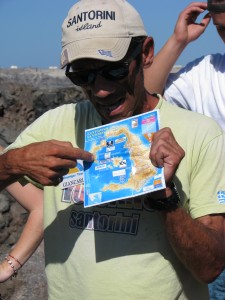 Santorini isn't really one single island, though it it was once. There was a huge explosion on the island around 1600 B.C. and it blew the center of the island out completely, creating a couple of islands in a ring around a deep round pit in the middle of ocean. This whole thing is the mouth of the volcano, or caldera, but it doesn't look like it because the whole volcano except for the topmost ring is underwater. To make thinks more compliocated, since the eruption, the volcano has refomed a small island in the center of its own caldera, and that small volcano has erupted a few times, too, though nothing like the huge explosion of 1600 B.C. In fact, as our guide told us over and over te reassure us, the volcano is actually cooling, and geologists think it's going dormant forever.
Santorini isn't really one single island, though it it was once. There was a huge explosion on the island around 1600 B.C. and it blew the center of the island out completely, creating a couple of islands in a ring around a deep round pit in the middle of ocean. This whole thing is the mouth of the volcano, or caldera, but it doesn't look like it because the whole volcano except for the topmost ring is underwater. To make thinks more compliocated, since the eruption, the volcano has refomed a small island in the center of its own caldera, and that small volcano has erupted a few times, too, though nothing like the huge explosion of 1600 B.C. In fact, as our guide told us over and over te reassure us, the volcano is actually cooling, and geologists think it's going dormant forever.
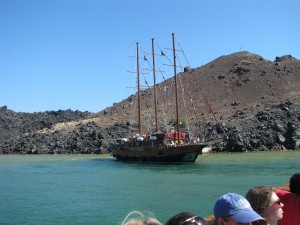 But I'm getting ahead of myself. When we arrived at Santorini, the ship didn't dock. It just sailed into the caldera and found the one spot where it could anchor (since most of the caldera is too deep the the ship's anchor). From the ship, I took a tenderboat with three of our students, Alex, Kasee, and Ian, and a large group of mostly young people from other tours. Our route was counter-intuitive if not outright inefficient; these boat took us to Santorini's "old harbor." There we got on different boats (I guess they were technically ships, since they had holds and a second deck, but they were single-masted sailboats that continuously run under power). These tour boatd took us first to the volcano, passing very close to the ship we'd just left.
But I'm getting ahead of myself. When we arrived at Santorini, the ship didn't dock. It just sailed into the caldera and found the one spot where it could anchor (since most of the caldera is too deep the the ship's anchor). From the ship, I took a tenderboat with three of our students, Alex, Kasee, and Ian, and a large group of mostly young people from other tours. Our route was counter-intuitive if not outright inefficient; these boat took us to Santorini's "old harbor." There we got on different boats (I guess they were technically ships, since they had holds and a second deck, but they were single-masted sailboats that continuously run under power). These tour boatd took us first to the volcano, passing very close to the ship we'd just left.
The volcano island has a small concrete dock, then some stone steps that are man-made. About a third of the way up the volcano, there are a couple of grass umbrellas attached to some benches, and a couple waste bins. At the top there's some equipment measuring seismic activity on the volcano. Other than the human contributions, the volcano is rocks, rocks, and more rocks. The variety of stone creates the interesting quasi-lunar landscape. As our group trudged along, it was interesting to hear how the different kinds of pumice stones scraped together beneath our feat. Most crunched loudly. Others whispered like sand. Some were more solid and made less noise. As we went up, I had a nice conversation with a pair of older ladies from Paraguay who were in the back of the group. Hint to guys everywhere: Offer a lady an arm up some difficult steps, and you've made a friend for life. Talking with them, I learned their trip from Paraguay, first to San Paolo, then to Rome, was only about an hour longer than our trip to Frankfurt and a bit shorter than our complete time-in-the-air to Rome. That surprised me. I also made some Portuguese friends who convinced me that everyone in Portugal speaks Spanish well enough that I won't have any trouble if I come there to visit someday. That sounds great to me.
I took lot of pictures of the craters on the volcano. At the tops of a few of them, our guide pointed out vents where you could place your hand and feel the steam coming out. I noticed he also covered his mouth with his shirt at one point, and I asked him about it. He explained that the sulfur was not dangerous to us in small doses, but because he walked through that mildly toxic cloud twice a day, it would damage his lungs. I don't know that a t-shirt will provide the protection he needs, but I hope so, because he was a genuinely nice guy. It was so breezy on the top of the volcano that the heat wasn't nearly the problem I'd expected. Sure, it was hot, but it didn't feel any hotter than walking around some of the islands between their white plaster walls, and I was cooler than I was while hoofing it up to the monastery yesterday. So that was one concern assuaged.
The tour boat took us around the volcanic island to a smaller, second volcanic island that was from and even older part of the cone that's formed inside the caldera. This volcano has a thermal vent like the ones we'd put our hands into on the larger volcano, only this thermal vent is underwater, so there's a natural warm spring. The boat took us maybe 100 yards from the thermal spring, and they told us to jump off the side. I forgot about my fear of sharks (totally irrational in the Mediterranean, I know) long enough to remember that I don't like cold water, so I jumped in and started swimming like crazy for the warm spring. As I caught up with Alex and Kasee, they said, "Man, Mr. Gorman, you swim fast!"
"Yeah, because I'm cold!" I shouted back.
Once we made our way to the thermal hot spring, it got a lot better, though never really hot. It was warm bath temperature, not Jacuzzi temperature. The most fun thing about the spring was the silt, a special iron and sulfur infused mud that supposed to be good for the skin. The kids had lot of fun painting it on one another (and a bit of throwing it at one another), until the boat honked a couple times and called us back. Here I was pretty disappointed in the young men from the various tours. The guys started pushing and shoving, fighting over the ladder up onto the ship, and they left all the young ladies treading water behing them. I was pleased to see that the last five or six of use were guys. Chivalry is not dead, just severely wounded.
That boat took us back to the old harbor where we'd boarded it, but no the tenderboats weren't coming to that harbor anymore, so we has to take a bus up the switchbacks that climbed the sheer face of the cliff. This drive turned out to be much scarier than either the volcano or the swim in the ocean. On the top of the ridge, the bus took use around to the town of Oia. That's where the picturesque images of layered houses hugging the clifftops are, but I had to take my pictures of Oia while on the move because we were running late. As predicted by the ship's Activities Director, there was a long line at the gondola going to the cliff to the tenderboats, but, as she'd also promised, they had a person from the ship's staff at the top making sure the ship was aware of just how many of its passengers were caught in that line, so we were in no danger of the ship leaving without us. We moseyed through the line and I think we all avoided buying touristy goods in Oia, a good think since it's probably the second-most posh and expensive place we visited after Capri. Once on the gondola, Ian and I chatted with a nice family from Australia. On the tenderboat, Ian talked about a single video game I have never played nor will ever play the whole way back, and I felt very at-home because my son will do the same thing if given the chance.
Back on the ship, I packed and collected my passport from the reception desk. (They take it so they can manage customs for you at every port of call. It's convenient, but being without it made me nervous. Of course, they also keep it so that you are forced to settle up your bill at the end of the trip.) Taking care of this business almost made me late for dinner, but they were nice enough to seat me in the restaurant right at ther closing time (I was that guy). I popped by the large auditorium on the ship where one of the students from the Moses Lake portion of our group had entered herself in the talent show. Amanda ("Other Amanda") sang a song from Oklahoma, and I was proud of our kids for showing up and cheering her on.
Now I've come back to my cabin and caught up with the trip, so I'll be able to post this once I have internet somewhere. That might be the airport in Athens, or in Munich, or in Washington D.C.
Day 12
Today was all travel. We disemebarked from the ship and a bus took us to a hotel in Athens, where the Moses Lake group would stay for on more night before flying back to Seattle. We said our goodbyes to them there, then headed to the airport, where there was another round of hugs and goodbyes for John, our wonderful tour director. He promised to stay in touch on Facebook and even offered to show the kids the night life of Athens when they come back as adults, something he may come to regret because a few are planning on taking him up on the offer.
The plane was a bit delayed in Athens, just enough to make people nervous about the connecting flight in Munich. In Munich, we had to hustle, but we made that flight with some time to spare for bathroom breaks, and then it was on to D.C. On the way I watched a couple movies, Grand Budapest Hotel (enjoyable, but Anderson's hyper-stylized directing is getting a bit too cute for its own good), and 47 Ronin, which really should have been called The Legend of The 47 Ronin is Completely Overshadowed By the Addition of This New White Character and a Lot of CGI (I still enjoyed it more than I'd expected to).
In D.C. we got to our hotel and found that we're further from the city center than we'd anticipated and that transportation of the group in to see the national mall will be challenging tomorrow. We looked into public buses and the metro systems, but the hotel's shuttle would only take us to the airport ten at a time, then we'd have to wait a half an hour there for the next batch, then another half and hour for the last of us, so that would eat up almost all our time in D.C. Roseanna and I finally called some cab companies and we'll have seven cabs come picks us up tomorrow, take as to the national mall, then seven different cabs bring us back in time to grab out stuff and get to the airport to go home. We'll only have four hours there, not enough to do more than take pictures of the exteriors of the monuments, but we think that's still worthwhile for the students.
My body clock is all thrown off. We'll see how sleep comes and goes in the next few days. Tomorrow, the national mall, then the flight home, then I sneek in and try to kiss Noah and Paige without waking them because it will be between 11 and midnight when we arrive home.
Day 13
Today was a bonus day of quick sight-seeing in D.C. before hopping on our last plane to go back to Portland, then a bus back home to Independence/Monmouth. We took six cabs from our hotel out by the Dulles Airport, zipped into D.C., walked a circuit from the Lincoln memorial to Congress and back. Here are the bonus pictures:
And finally, a very happy return to Independence:
































